The Fundamentals of Semolina Pasta Dough
I am a big fan of making homemade semolina pasta. If I can find bulk semolina at an affordable price? I'm absolutely going to make fresh pasta for breakfast, lunch, and dinner. It's much simpler to make than I thought that it would be and is a great addition to your culinary arsenal. There's really no contest between store bought pasta and the real deal.` When you get the hang of it, it really only takes about 15 minutes to mix the dough together. Less if you have a standing mixer and don't insist on doing it by hand.
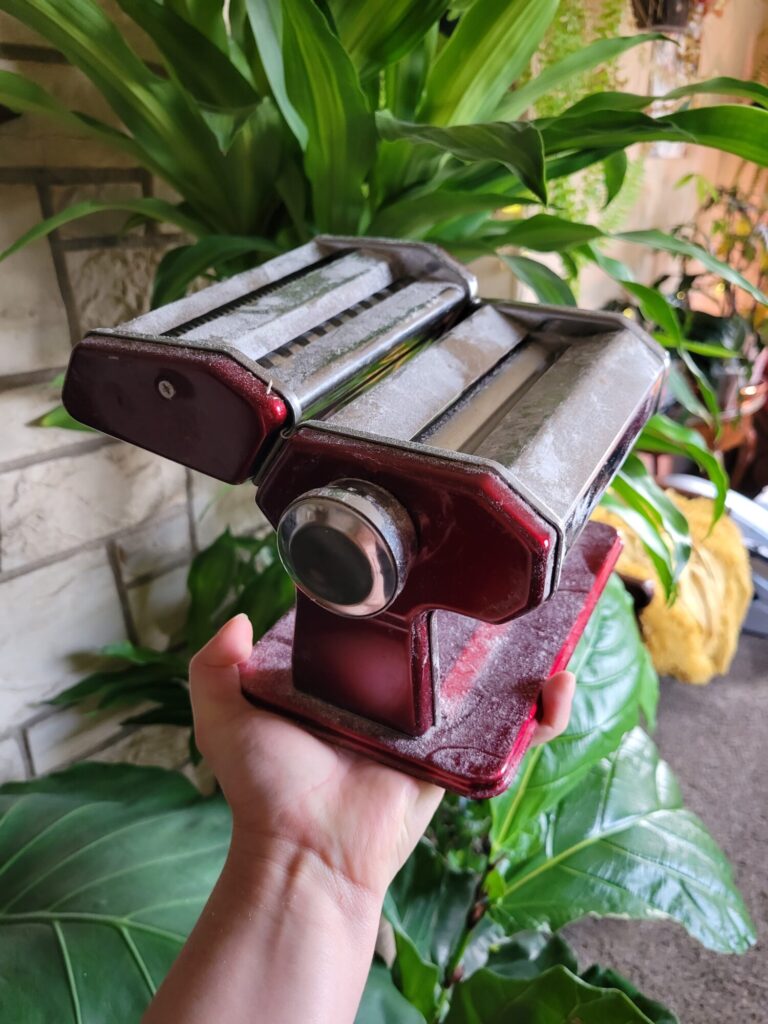
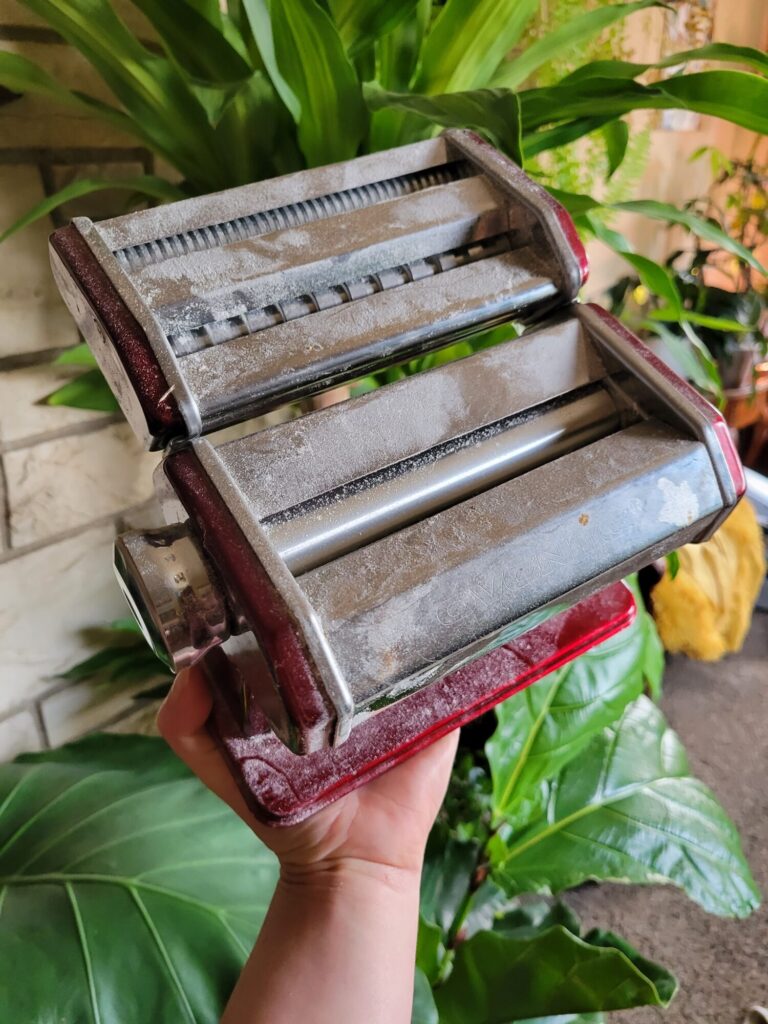
Do You Need a Pasta Maker?
I personally do use a pasta maker. It costs about $20-40 on Amazon and is one of my favorite culinary possessions. They're one of the more affordable culinary contraptions that I use on a regular basis.
I used to live in an Airstream and was on a 2,000 mile move with 2 cats, a dog, and 9 chickens when I still made semolina pasta on a park bench in the middle of woods. I truly will use any and every opportunity that I can to make homemade pasta.
As much as I will trek my pasta maker around the country and on all sorts of adventures? It's not necessary. It's inexpensive enough that, if you're going to make pasta regularly, I'd probably recommend picking one up. You certainly don't need one, though. I started out making pasta with a rolling pin and a knife. I've even known people without a rolling pin to use a wine bottle in its stead. You really just need to roll out the dough thin enough to cook and cut into the desired shape.
If you want to go the more industrial route as well, a lot of stand mixers have a pasta attachment if you want a motorized version. Otherwise, I'm quite fond of my little red manual pasta maker. Most of the pieces are metal and last virtually indefinitely. Although I did break the plastic crank part once and had to replace it. So, I've had a grand total of 2 of these in the past 10 years.
A rolling pin and a knife will also do perfectly well, though. Especially if you don't know whether or not you want to commit to making homemade semolina pasta from scratch yet!
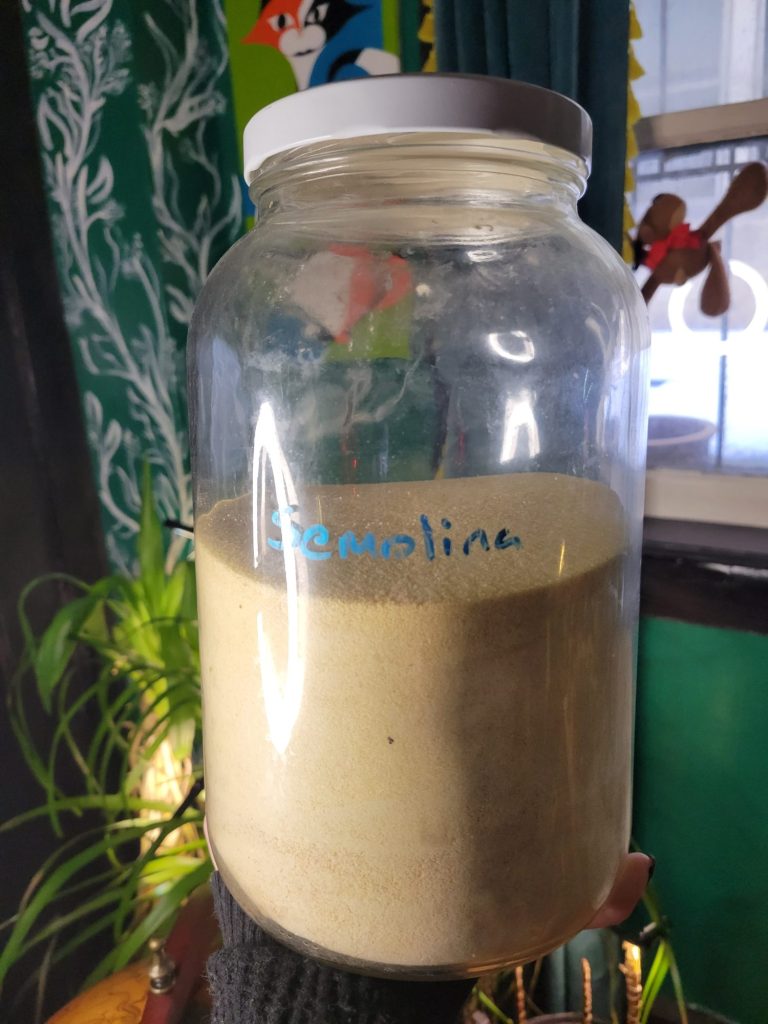
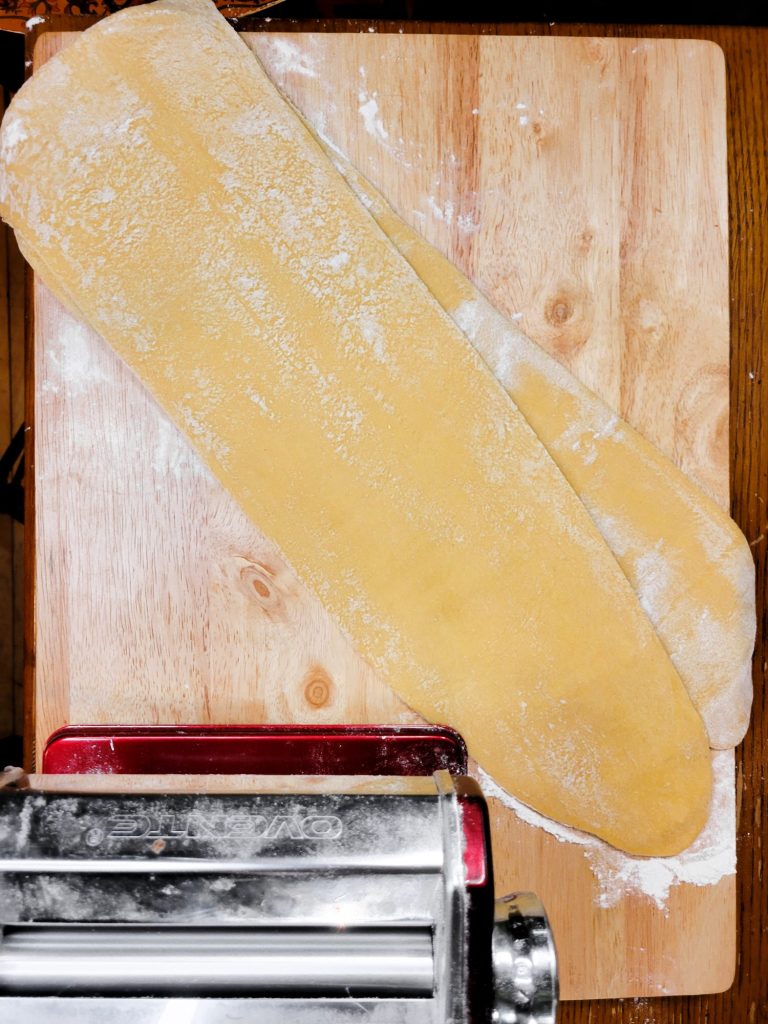
What is Semolina and Do You Really Need It?
Semolina is a type of flour made from durum wheat. It's similar to the common wheat that most flours are made of. Although it has a warm, yellow hue and is generally a little bit coarser. It's predominantly used in pasta making because it has a higher protein content, which creates a softer and more pliable dough than common wheat flours. It's typically considered a "healthier" alternative to white flour.
There are plenty of ways to make pasta, though. White flour, whole wheat flour, rice flour, and chickpea flour are all commonly used to make noodles that resemble what we like to describe as pasta. American palates almost never come across semolina, though, so the difference between a semolina dough and the packaged white pasta that a lot of people are accustomed to can be a bit jarring.
You can make pasta with 100% semolina. Likewise, you can also make it with 100% white flour. I tend to use half semolina and half all-purpose flour. This is more a matter of personal taste, though. I'd wager that, the closer that you get to Italy, the greater the semolina content. Although it is certainly a niche audience in the United States.
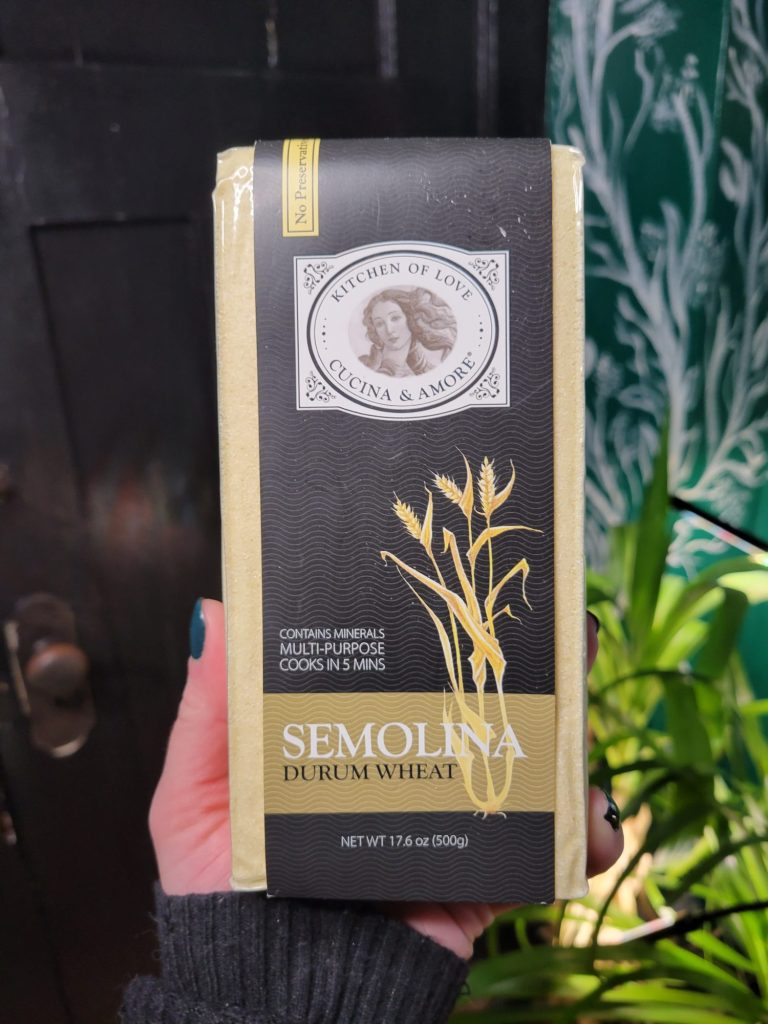
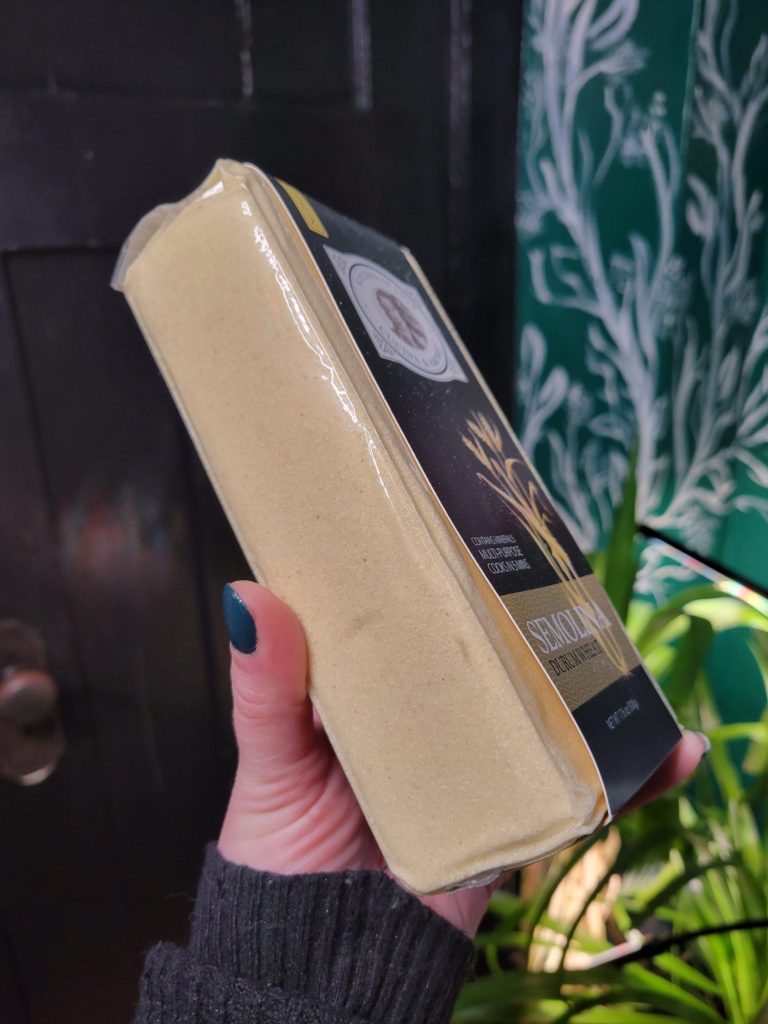
Where Do You Get Semolina?
While I do highly recommend using at least some semolina in your pasta dough, it's not always the simplest of ingredients to find. I can sometimes find it in the "ethnic" or "alternative" section of my local grocery store. I live in Wisconsin. So, if I can find it here, it's likely available almost everywhere! Semolina is typically somewhere near the masa flour or in the gluten free/health food isle. Semolina is not gluten free and it's certainly the same color, but not from the same region or remotely similar parts of the globe. This does tend to be where grocery stores lump things that they don't know where else to put together, though. It's sometimes tucked away in the baking isle near the teff flour and somewhere in between the baking soda and the pancake mix.
I generally wouldn't recommend asking employees where semolina is because, quite frankly, they don't get paid enough to care about specialty items that don't get stocked all that much. Although, if your grocery store has an app with location information, that's usually a pretty good indicator of the isle that it's going to be in. It's also usually available on food delivery site. Amazon does sell it. And, if you're in Oregon, I highly recommend Bob's Red Mill. You used to be able to order directly online from Bob's, but I think that they're switching their shipping methods to third party retailers. Which isn't necessarily a bad thing because shipping from them has always been on the pricier side when it has been available.
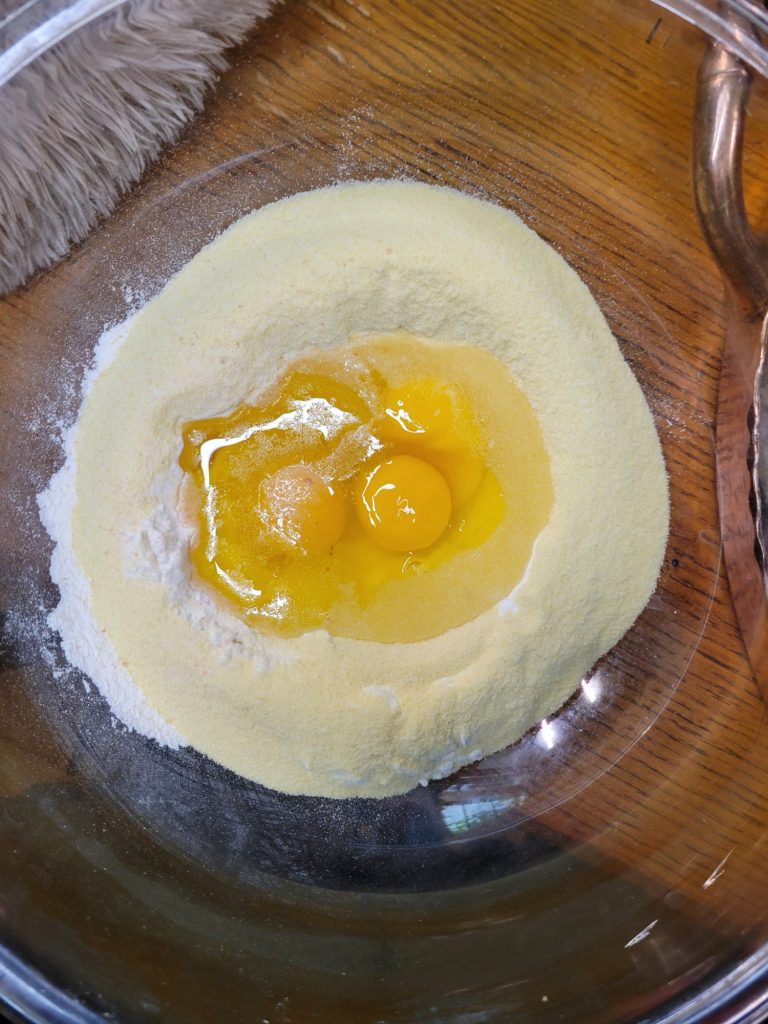
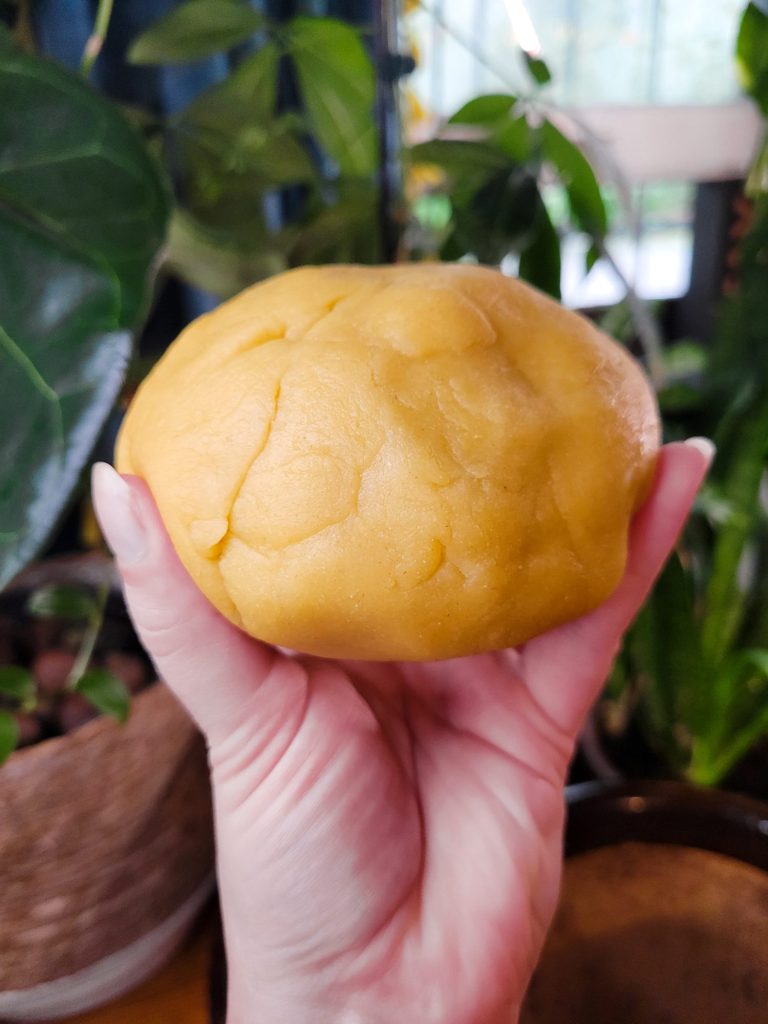
Did You Say Egg Pasta?
I tend to think of egg noodles as being more of an Asian than Italian dish. Although many fresh pastas use eggs as a binding agent. It's less common in grocery store pasta because eggs don't tend to keep well at room temperature. But it's the standard for homemade semolina pasta.
There are ways to make pasta without eggs. You technically only need flour and water to make dough. I tend to liken it to making tortillas without oil, though. Because yes, yes it is possible. But beginners are going to struggle with it not crumbling and breaking apart.
That's why I tend to use half semolina, half all-purpose flour, eggs, olive oil, and a dash of salt in my pasta recipes. You don't have to do this. But I do find it to be the simplest recipe to throw together and the most flavorful pasta recipe for American tastes. Ordinarily I wouldn't necessarily say to go with the Americanized version of a dish! Although pasta is one of those things that a lot of us have grown up so much with that, if you deviate too far from the baseline, the gummier taste and texture of other pasta varieties just isn't as pleasant to our palates.
This is all a matter of personal taste, though. So, feel free to deviate in order to figure out your own personal style and taste preferences. Although I would highly recommend starting with an easier pasta recipe like this one and then deviating from there. Because trying to go too complex too fast can be discouraging! And sometimes a few extra ingredients, like eggs and olive oil, make things a lot simpler. I know that it sounds counter-intuitive, but less is not always more!
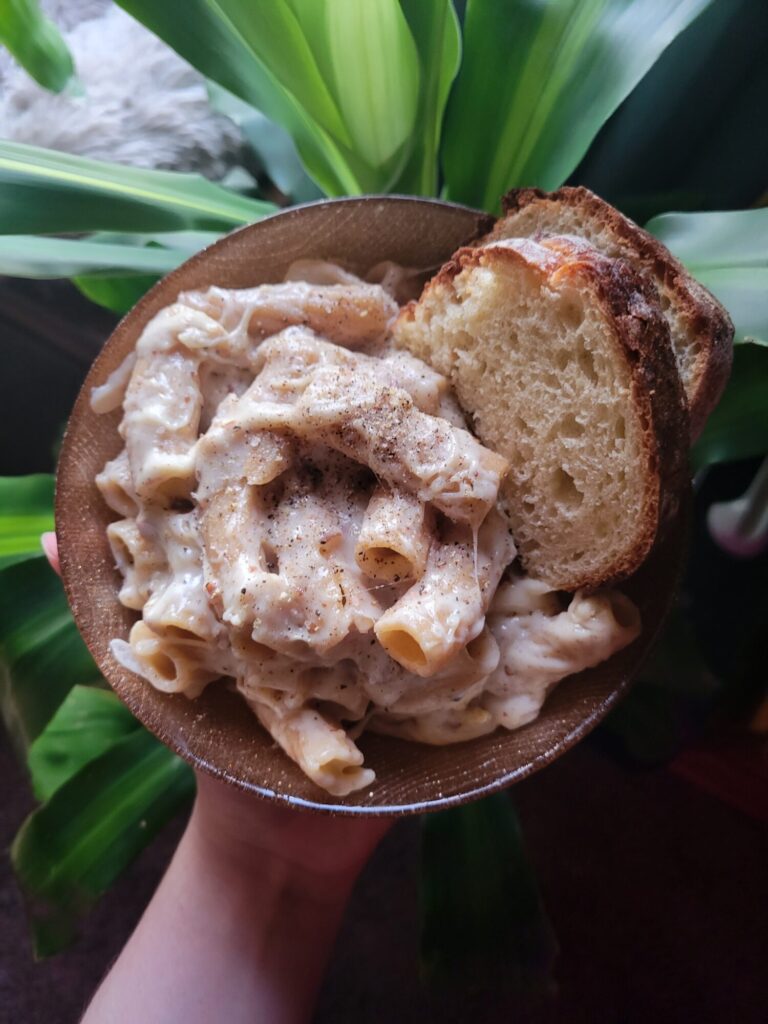
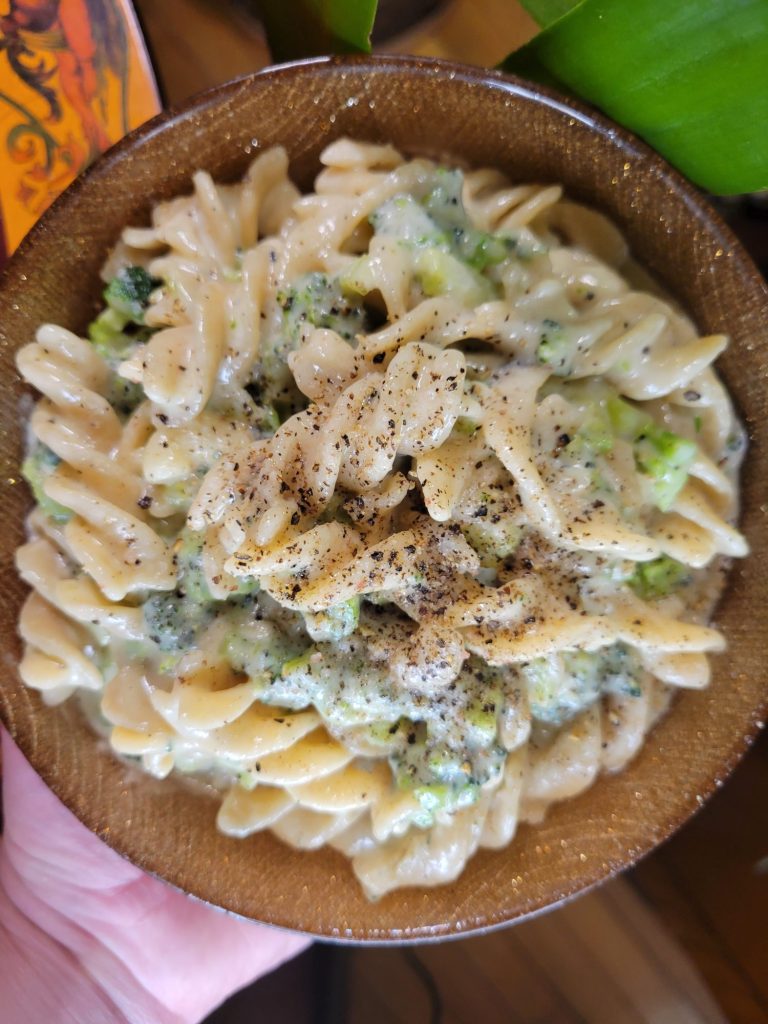
How Is Pasta Made In Restaurants?
I have tried drying fresh pasta. It seems like the thing to do because the vast majority of the pasta that we consume is dried. Even in restaurants pasta is almost always store bought. As someone who's worked in the restaurant industry, largely in Italian restaurants, for about 15 years? I've never once seen pasta made from scratch, let alone fresh pasta made from scratch that hasn't been dried. It's not one of those things that most places are going to put the effort in.
A lot of pasta actually comes pre-made, pre-cooked, and frozen. It's just dropped into a simmering pot of water to rehydrate. Which sounds gross, but have you ever gone to a restaurant and wondered why the pasta costs an arm and a leg but tastes horrible? Chances are that you've never noticed. And, if you did, this is why.
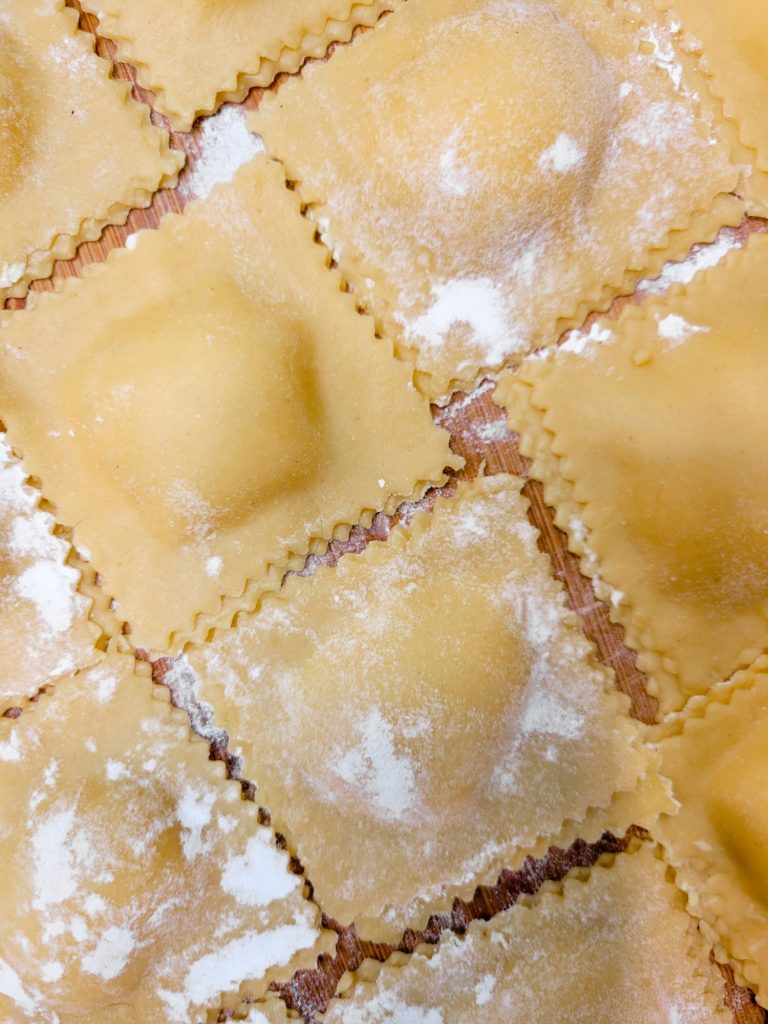
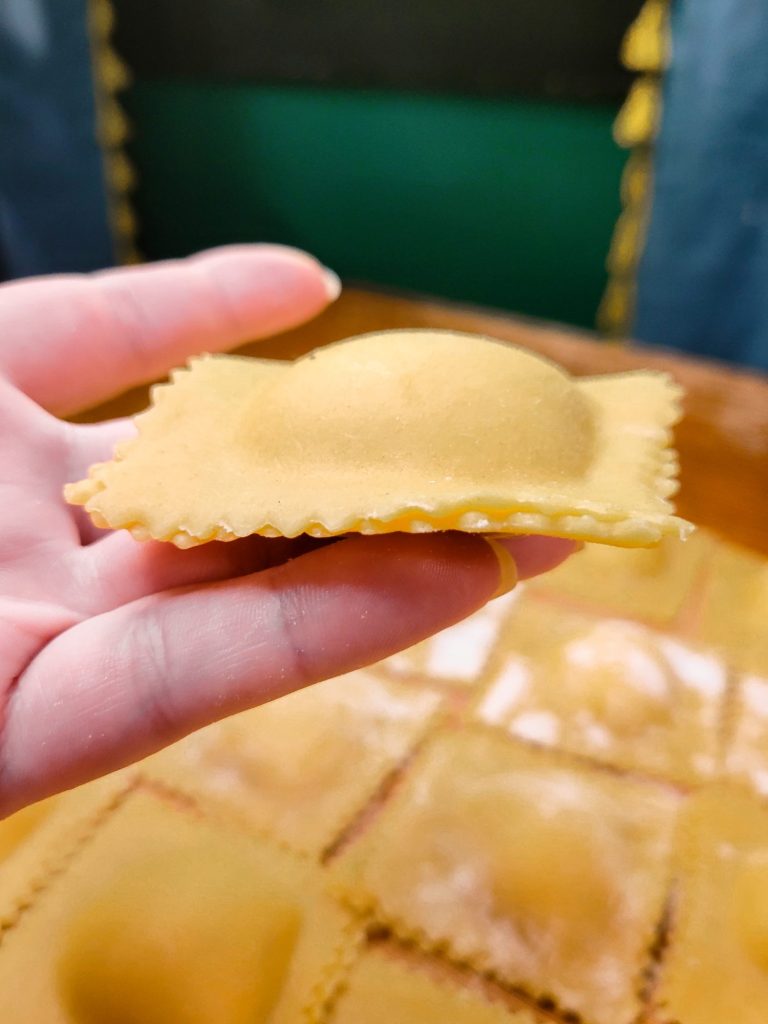
Do You Need to Dry Fresh Pasta?
The reality is that Americans tend to eat very low quality pasta en masse. Restaurants don't make better pasta because we've become so accustomed to dried pasta that it doesn't register that there's a better option. So, every time that I see someone drying their own fresh pasta? I kind of cringe a little bit. Because yes, you can dry your own pasta. Yes, your home dried pasta will taste better than the store bought dried pasta. But fresh homemade semolina pasta is unrivaled in taste. And I absolutely do not recommend drying it unless you absolutely don't want to eat it right away.
This might be a matter of personal taste, but I much prefer the taste and texture of fresh pasta rather than dried. It literally cooks in the time that it takes for the water to boil again after the pasta, which equates to about a minute or two max. And I don't understand why other people insist on drying their pasta, other than to make it in bulk and save for later. With the exception of ravioli, which does tend to break apart if you don't dry it at least a little bit before cooking. Although I do tend to make egg pasta, so trying to keep it fresh for long periods of time isn't necessarily the best of ideas.
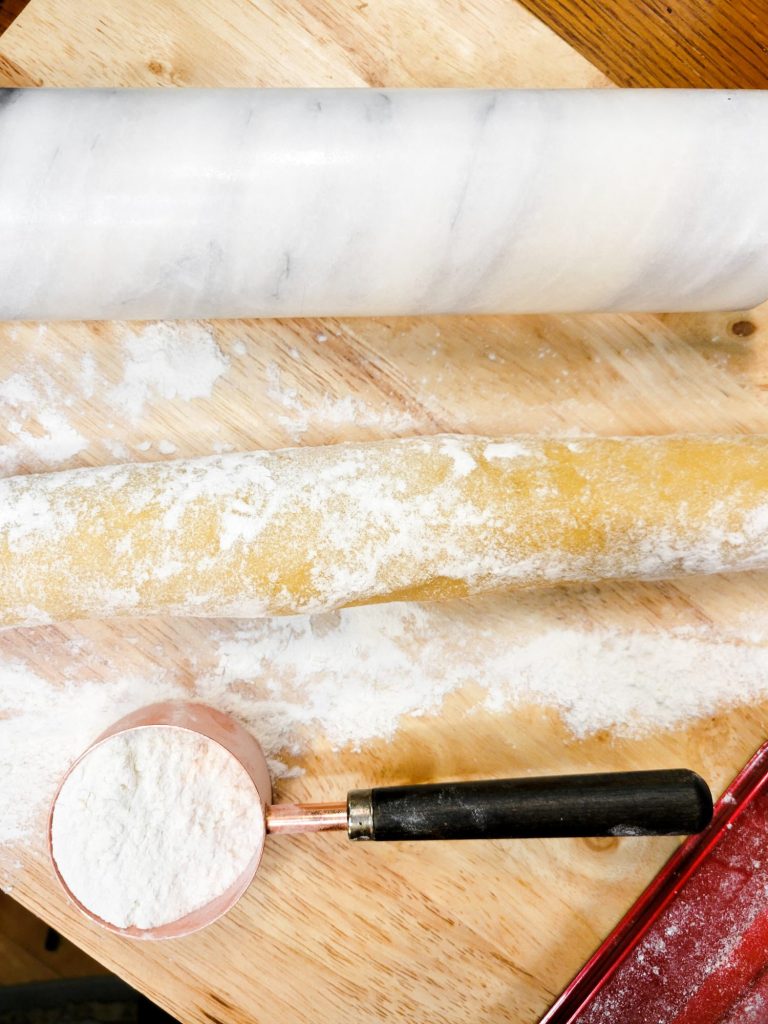
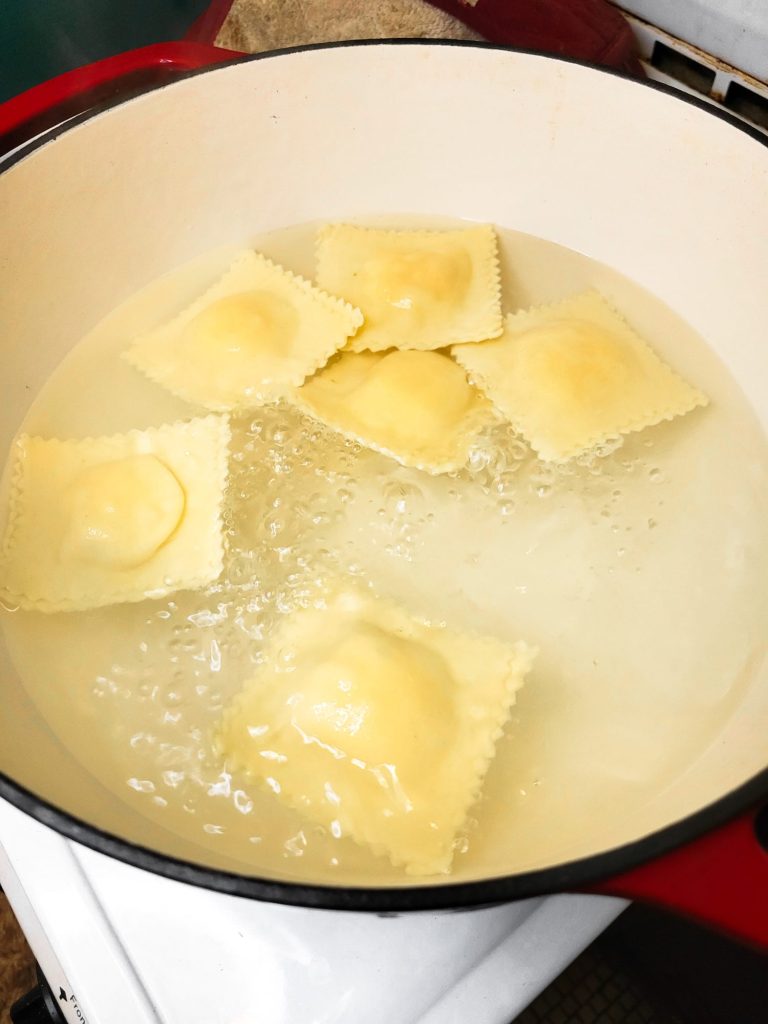
What Pasta Shapes Can You Make?
There are a wide variety of pasta shapes out there. Some of them are easier than others! Some of them I highly recommend and some I... highly do not recommend. Although it all has to do with what equipment you have and how much time and effort you're willing to put into the pasta shaping dilemma.
Lasagna
The simplest pasta to make is lasagna noodles. Most pasta machines roll out the dough to about 2-3 inches wide. So, you simply need to keep the lasagna at that width and cut to the size of your pan. I highly recommend making your own lasagna noodles. They're by far the simplest pasta to make and are well worth the effort.
Angel Hair/Linguini/Capellini/Spaghetti/Pappardelle/Tagliatelle
The next easiest to make are angel hair and linguini. I tend to opt for linguini because angel hair cook in a fraction of a second and is incredibly easy to overcook. Although both can be made with the pre-cut settings on the pasta maker. Alternatively, you can roll out the dough with a rolling pin and cut the strips by hand. This same process can be used for capellini, spaghetti, pappardelle, tagliatelle, and other single width pasta.
Ravioli
Other pasta shapes are going to require a bit more elbow work, but are usually within the realm of possibility for homemade semolina pasta. The next easiest pasta shape is likely ravioli. They make ravioli stamps in various round, square, triangular, or even heart shaped presses. These typically just stamp where you need to cut the dough. Although this does help make for uniform sized ravioli.
You'll also need a knife or a fluted pie cutter to cut out the shapes. But this is still a pretty simple step in the pasta making process. Just stamp, cut out the shape, add filling in the middle, wet the edges by dipping your fingers in water or spray with a spray bottle, and firmly press the ravioli edges shut around the edges. It can help to let these dry for about an hour before cooking in order to make sure that the edges don't pop open while cooking.
Farfalle/Bowtie
There are a plethora of other shapes, like farfalle or bowtie that are also fairly easily constructed. Just cut the strips into squares, much like with ravioli, wet the centre of the pasta, and pinch together. If you want to step it up a notch, cut the vertical edges (the right and left edges) with a fluted cutter and the horizontal edges (the top and bottom) with a knife or straight cutter. This will create the fluted edge on just the sides of the farfalle, like with store bought pasta.
Tortellini
Tortellini has a similar design. You cut the pasta into squares, wet the edges, and then carefully shape into the right form. I could describe how to do this. Although I would highly recommend finding a video on rex to make them because it's going to get lost in the translation of fold this side into the other side without messing up the other side. With the shaped pastas, though, it's incredibly important to get the dough rolled out as thinly as possible and these are going to be a more advanced shape because the dough is doubled up on itself. So, just don't start with a filled pasta or specialty shape.
Macaroni/Ziti/Rigatoni/Cannelloni/Manicotti
Rounded pasta, like macaroni, ziti, rigatoni, cannelloni, and manicotti are a little less out of the realm of possibility when it comes to making your own pasta, though. The rounded shape is almost exclusively made with industrial equipment. I have attempted to use a small dowel to wrap the pasta around and make macaroni. It's technically possible. I have a series of photographs for when I did it maybe 8 years ago. Although I highly discourage trying!
Manicotti is a lot more manageable because the noodles are larger. All that you have to do is cut them to size, wrap the dough in a circle (preferably around something that is the right shape/size), wet the edges, and press them together. Although you then have to let the pasta dry in that form. It's much like the process of making cannoli where the wooden dowels used to create the round shape are tossed into the deep fryer with the dough and then removed after cooking.
Shells/Conchiglie/Gnocchi
Shells, conchiglie, and gnocchi, along with some rounded pastas like rigatoni and ziti, are known for having grooves in addition to the rounded shape. These are typically created by hand by pressing the dough into a grooved wooden board. You'll typically find these sold as "gnocchi boards." They're available in patterns in addition to the simple grooved design. You use them much like a rolling pin stamp where you just press the pasta into them as you shape it.
This is the quintessential design of gnocchi. Which is kind of cheating as far as "pasta" is concerned because gnocchi is made out of potatoes and isn't a true pasta in the sense of being made from any sort of flour.
I've lumped shells into this category because, even though they don't necessarily have the grooved pattern on them, they are made by the process of curling them. They're just not curved on a board to create the indented pattern. Although the same process is used to sort of roll them into the desired shape. This is, again, also something that I wouldn't recommend the beginner pasta maker trying. They're quite difficult to form and, while possible to do by hand, are a lot more time consuming. Occasionally I do make gnocchi, but that's really a tutorial for another another article. You press firmly in a particular swooping pattern to create the shape.
Orzo, Rotelle, Torchio, Cavatelli, Cencioni, Spaetzle
There are plenty of other pasta shapes. There are likely ways to make these by hand. Although a lot of the time these specialty shapes are significantly more easily made with specialty equipment. They're not something that I've ever tried.
They do make ricers, noodle presses, specialty shapers and such for less easily created pasta shapes. This are much more widely available than they used to be. Even a couple of years ago, people looked at you funny for trying to make pasta from scratch, let alone acquire specialty equipment to do so. As it becomes more mainstream, I'm sure that we'll see a lot more of these out there. I know some people in Wisconsin who make spaetzle by hand with a cheese grater-like contraption.
Essentially, if there's a will, there's a way! There's almost always a method for making pasta by hand as well as various pasta makers and shapers that are available out there. So, if you're set on making something specific, there is more likely than not a way in which you can do it. It's just a matter of how much time and effort you can put into it.
Gallery
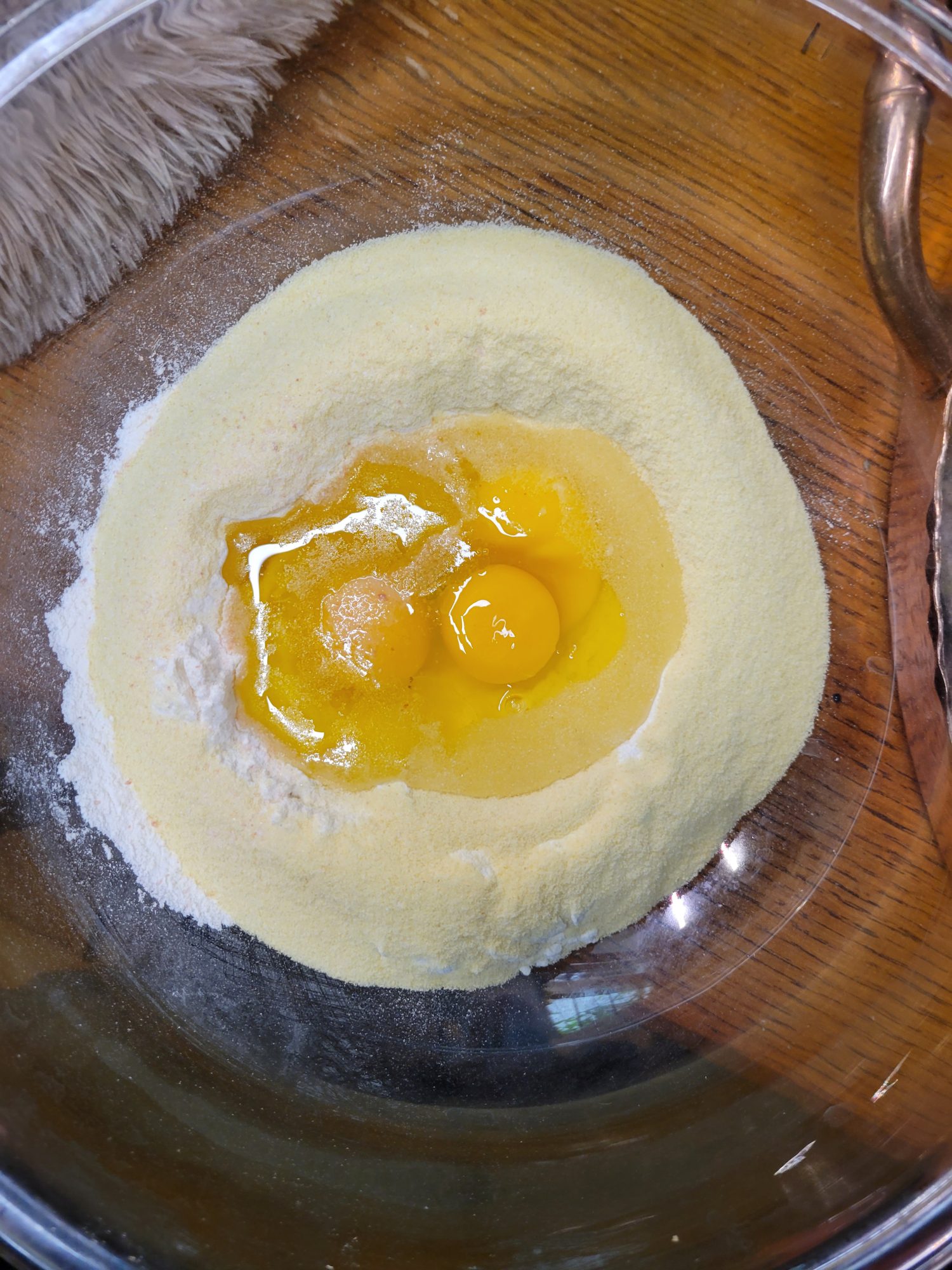
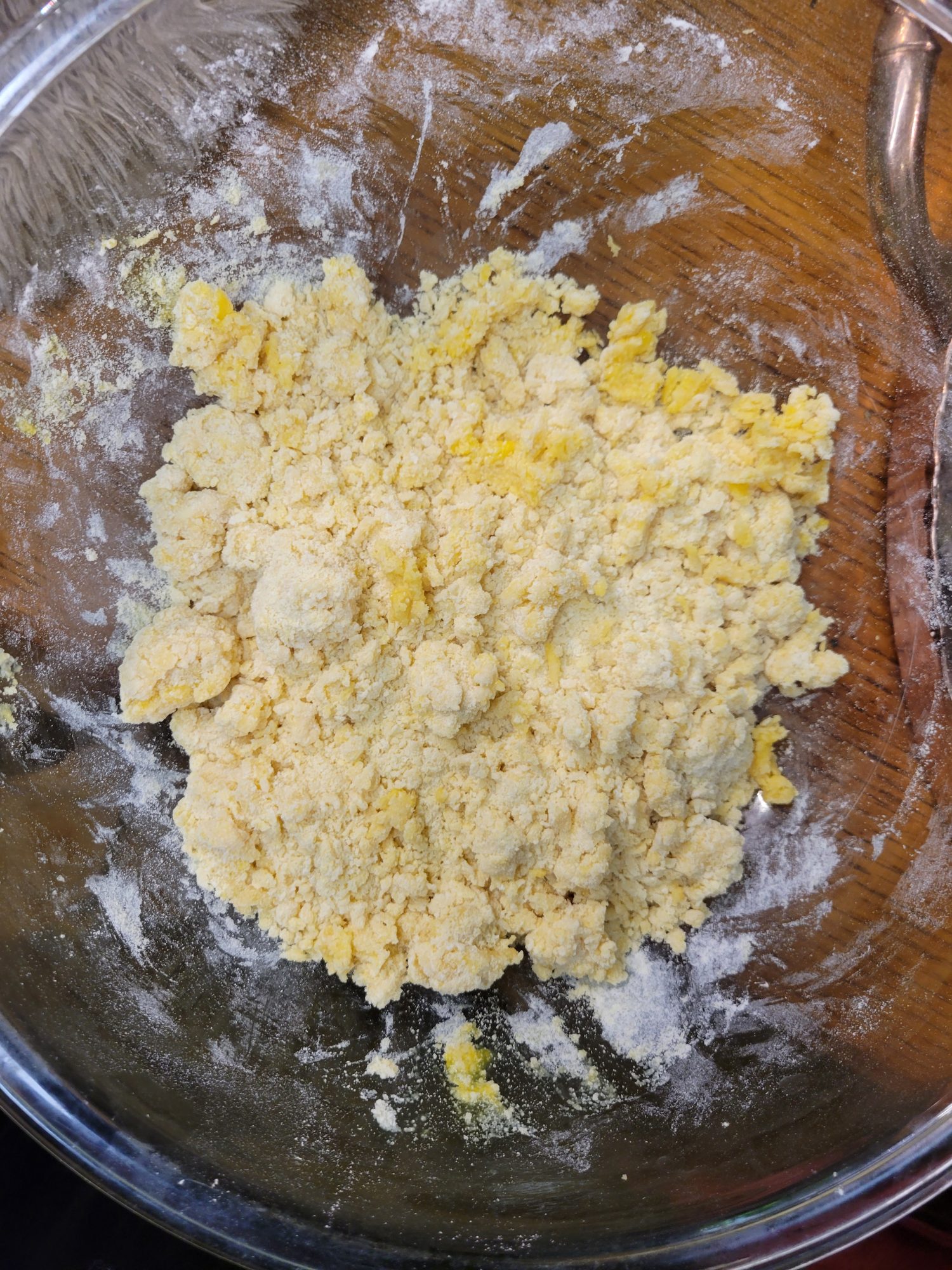
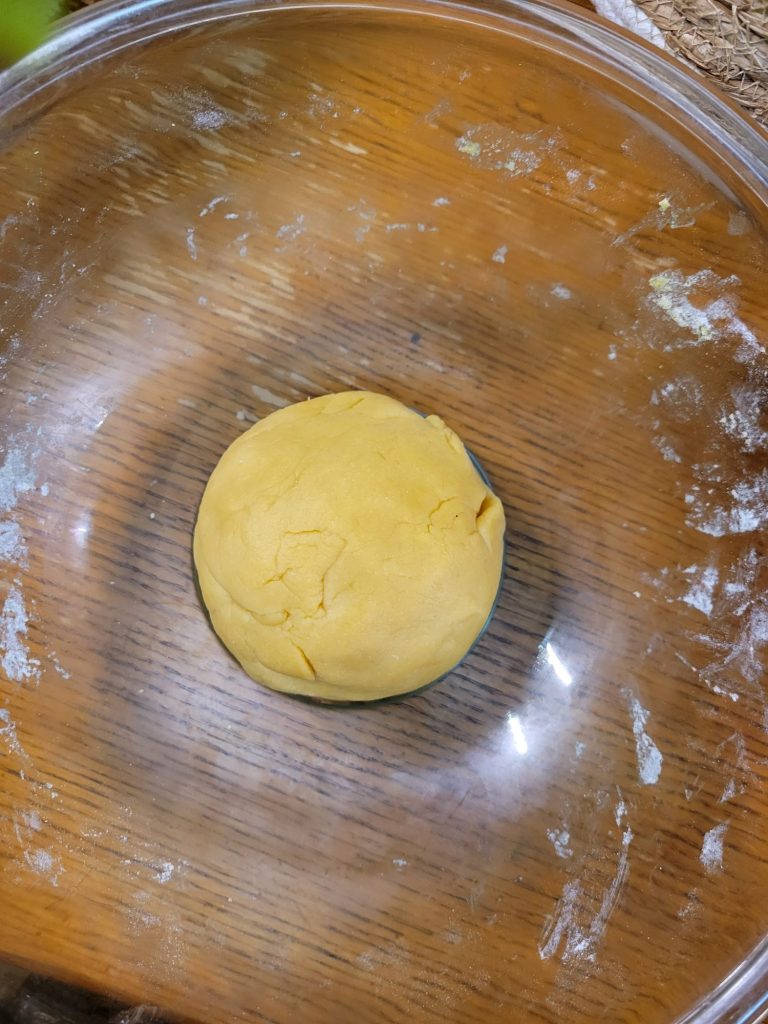
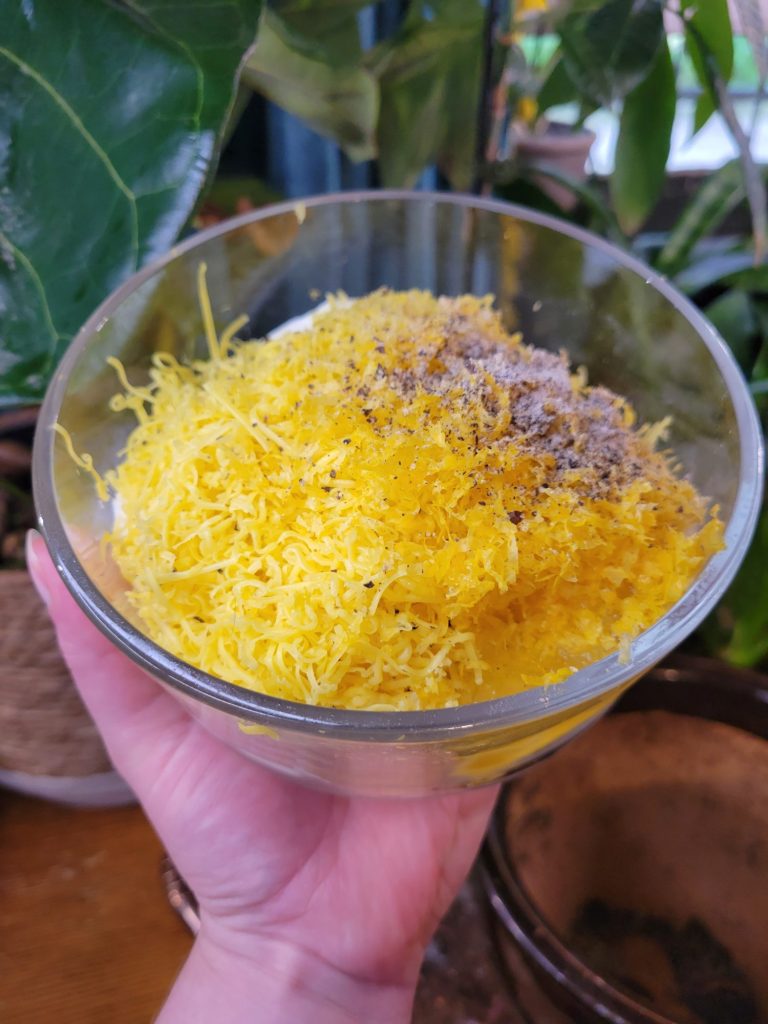

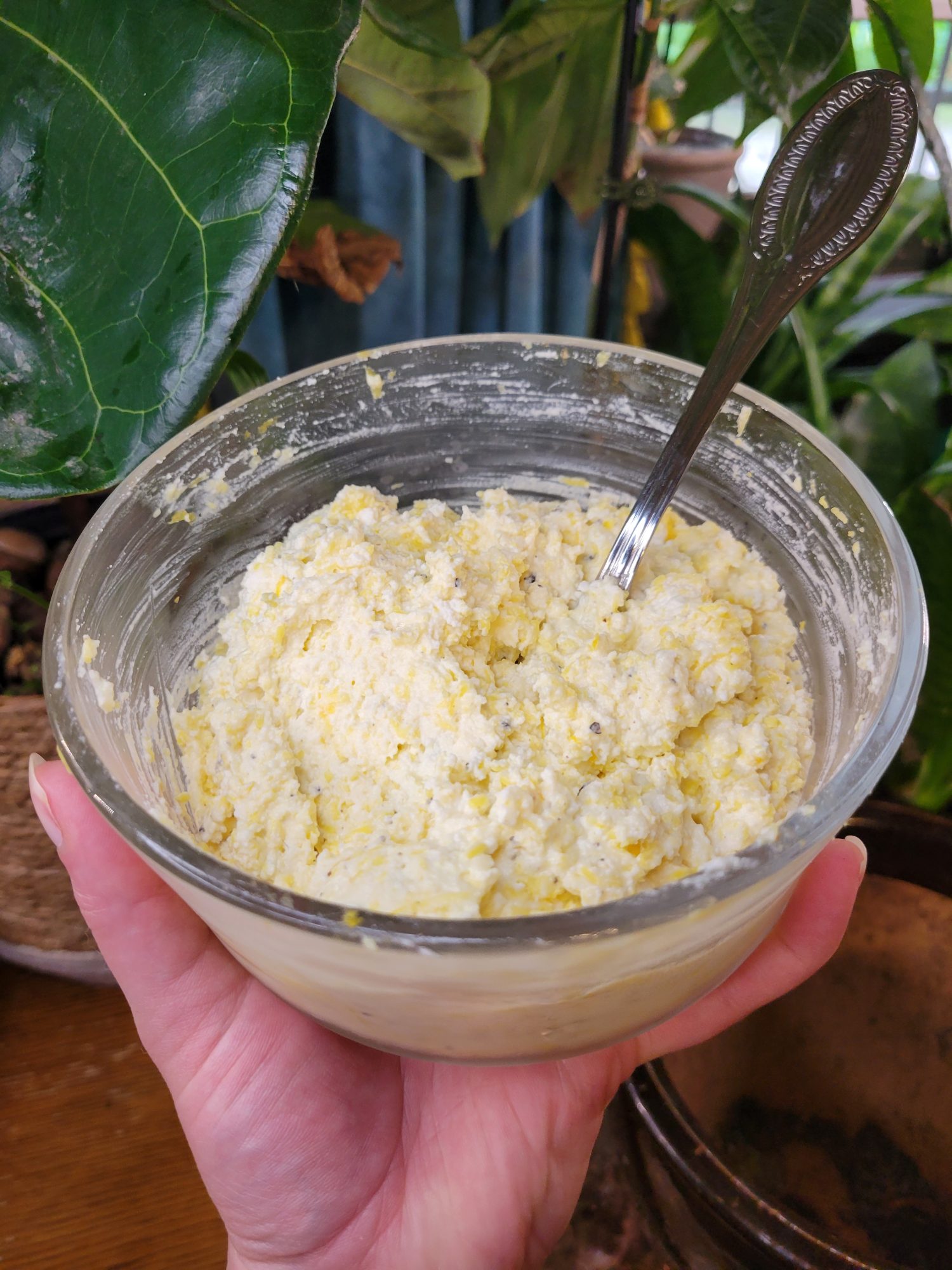

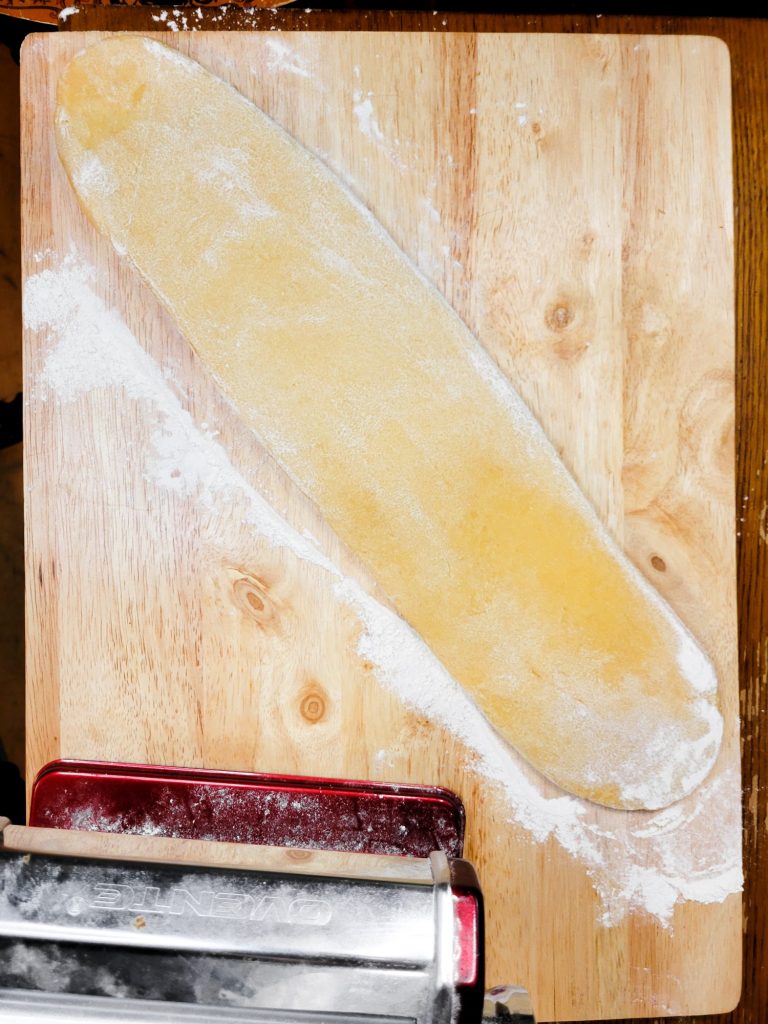

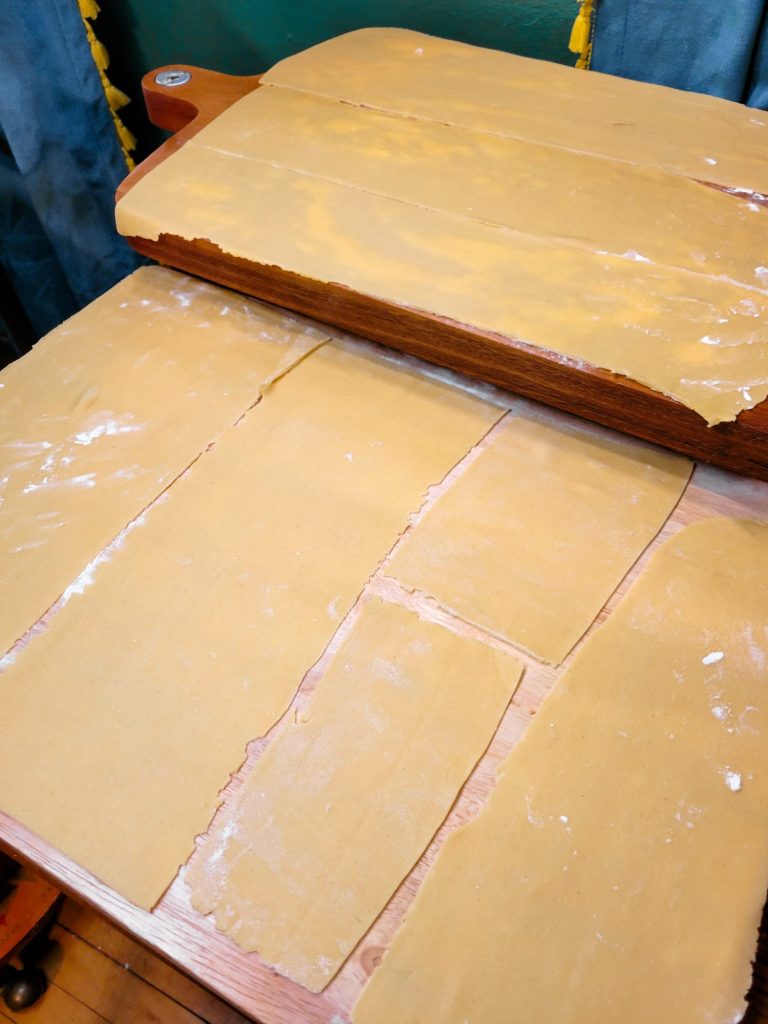
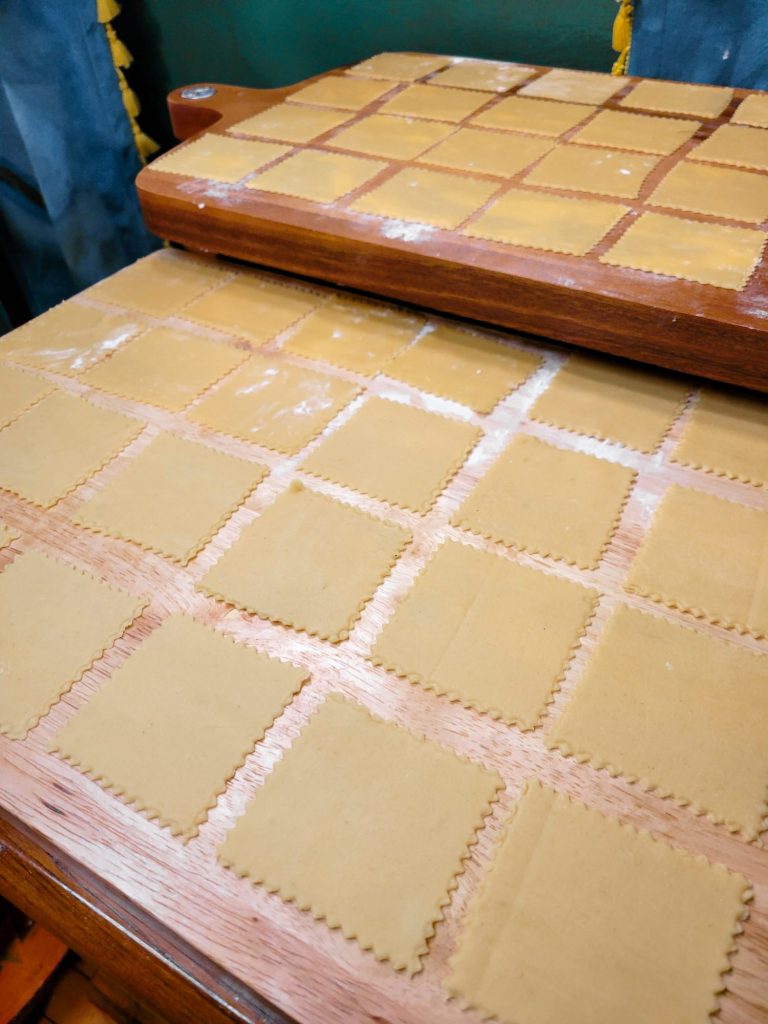
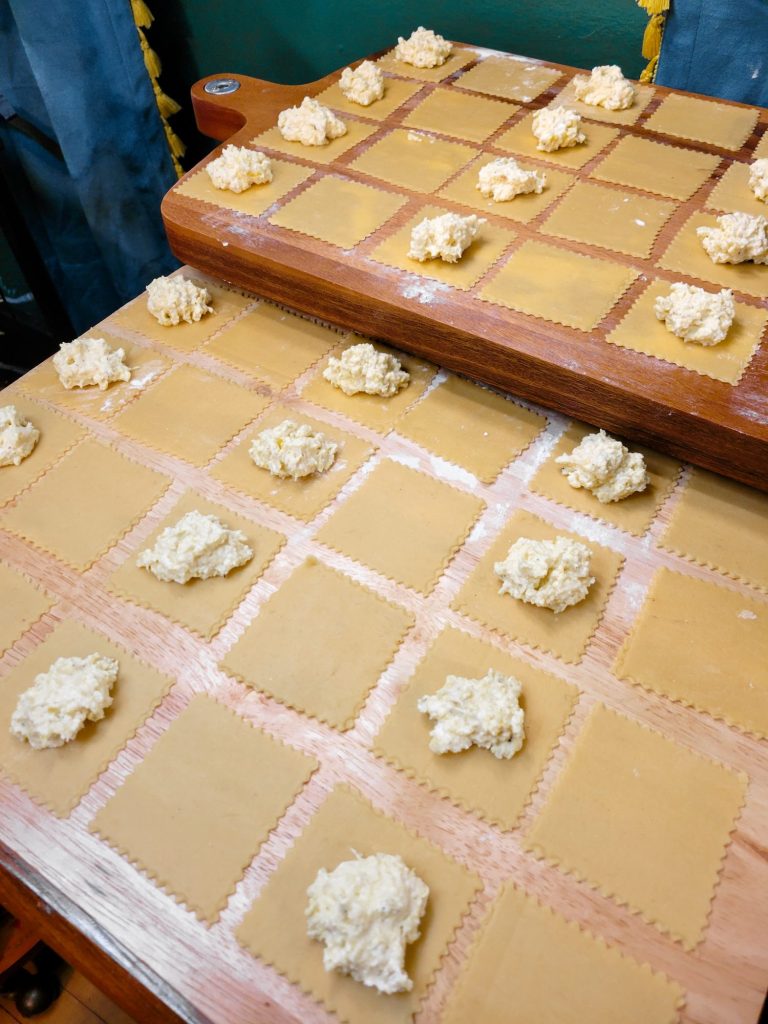
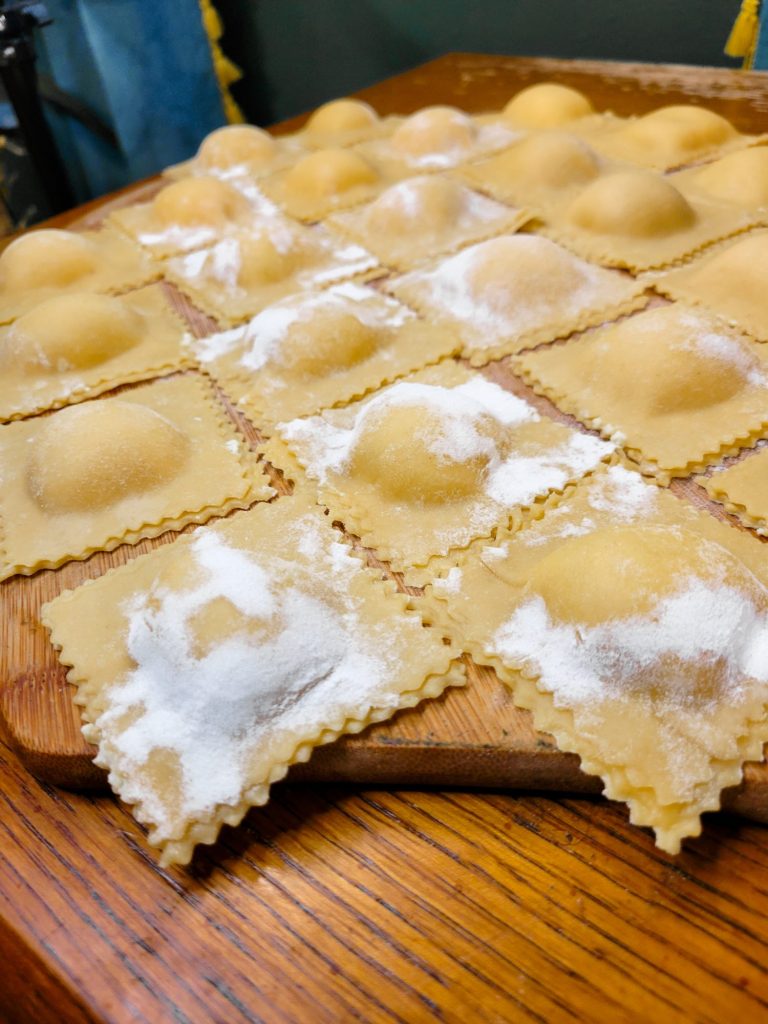

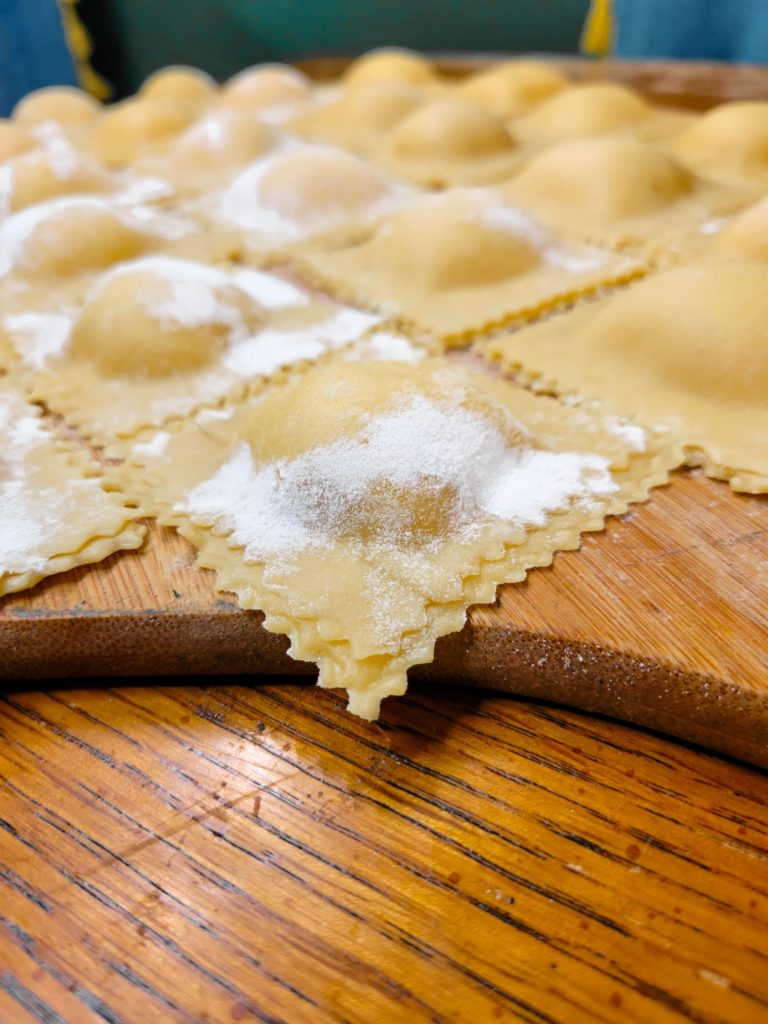
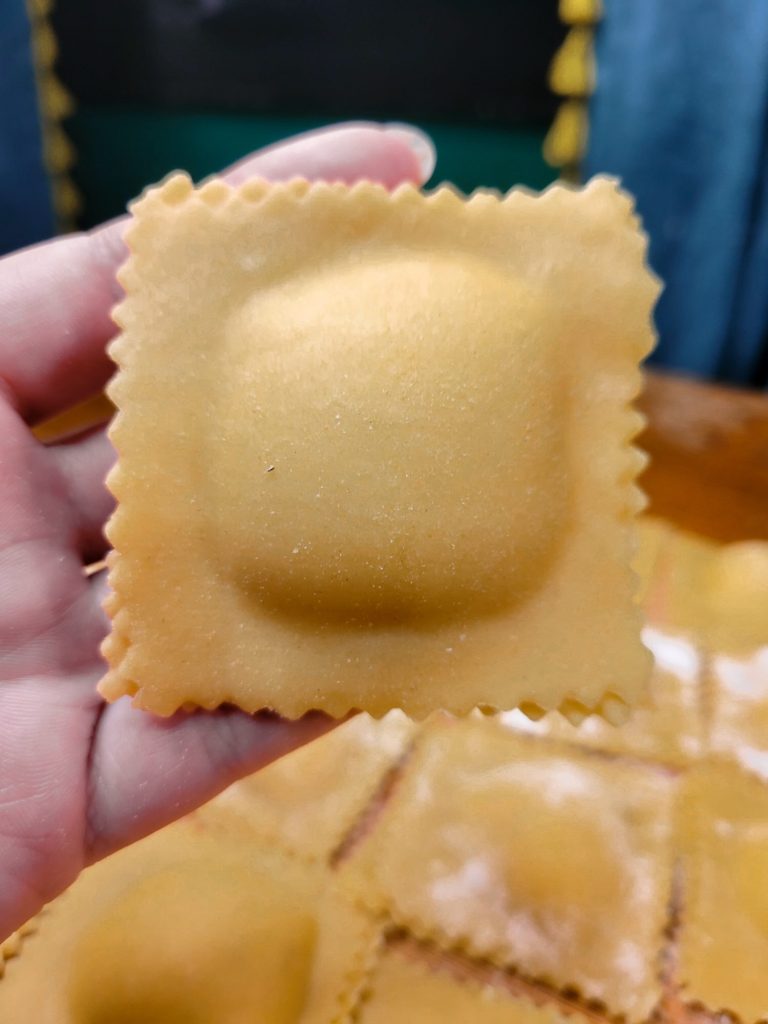


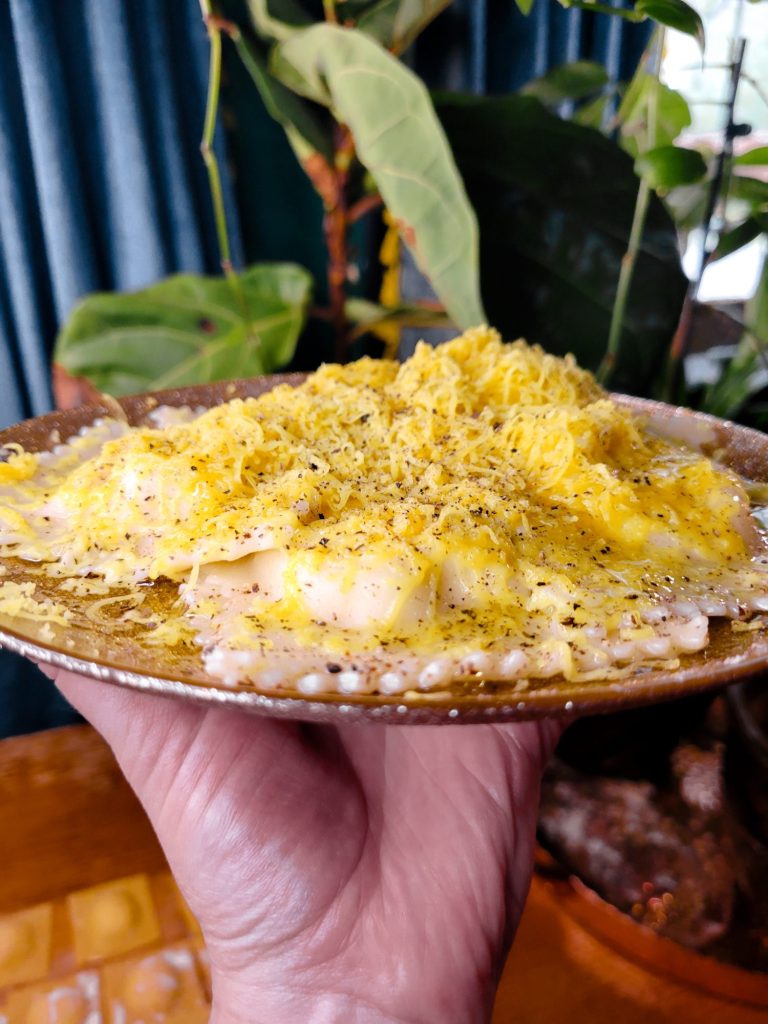
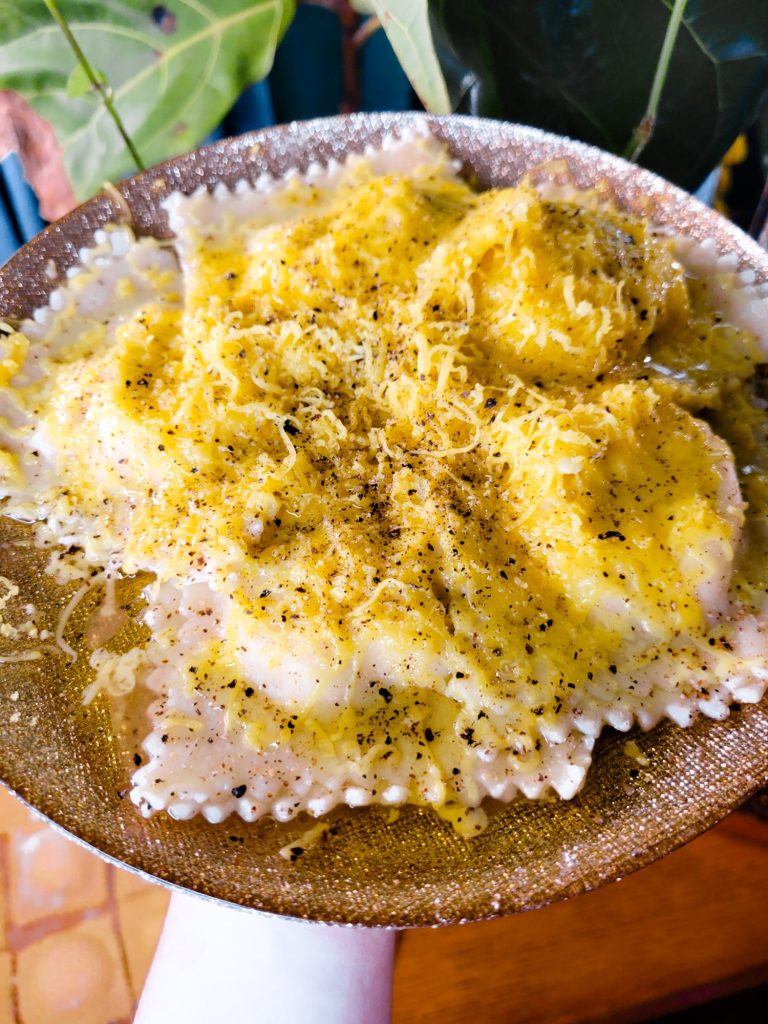
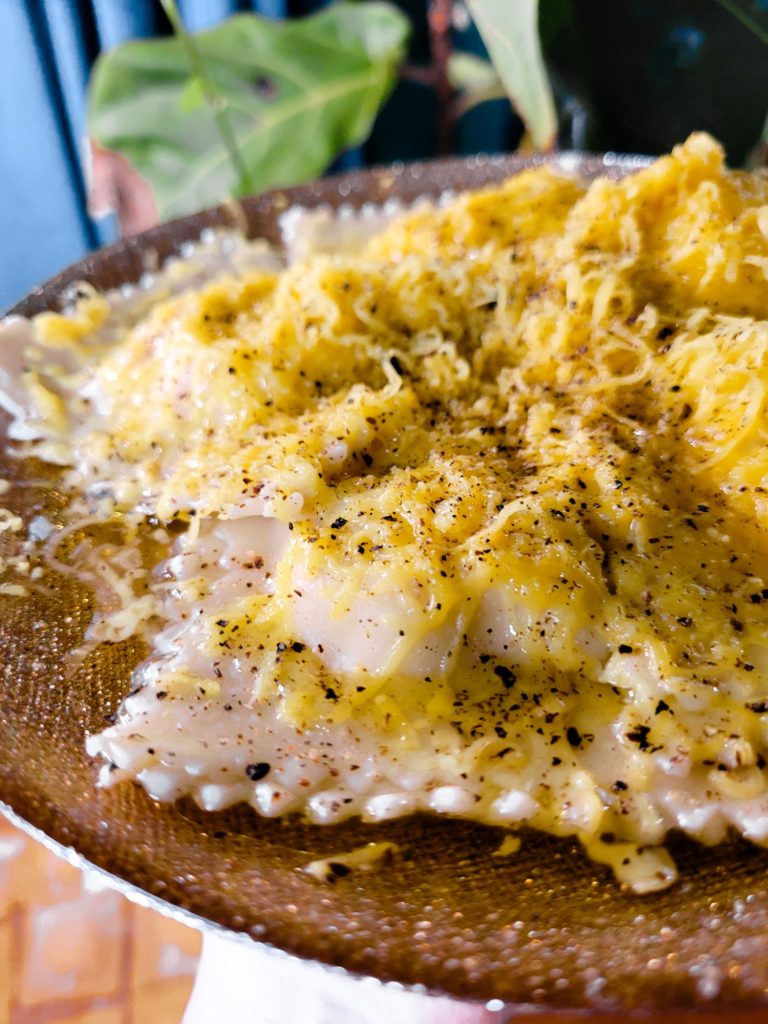
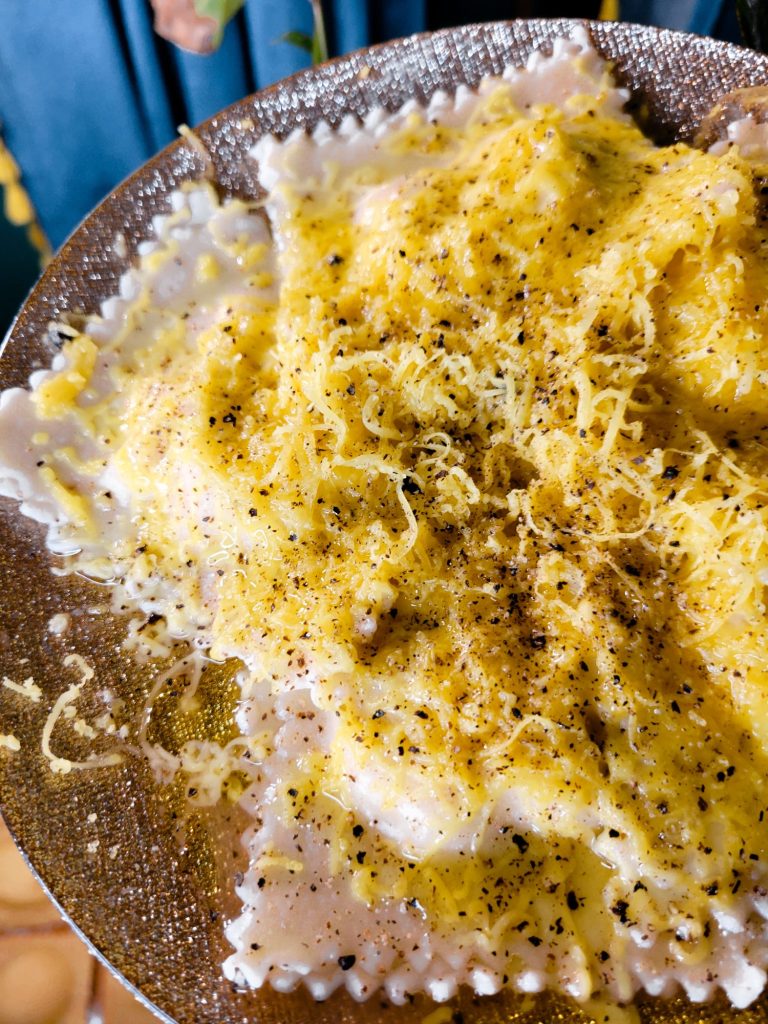
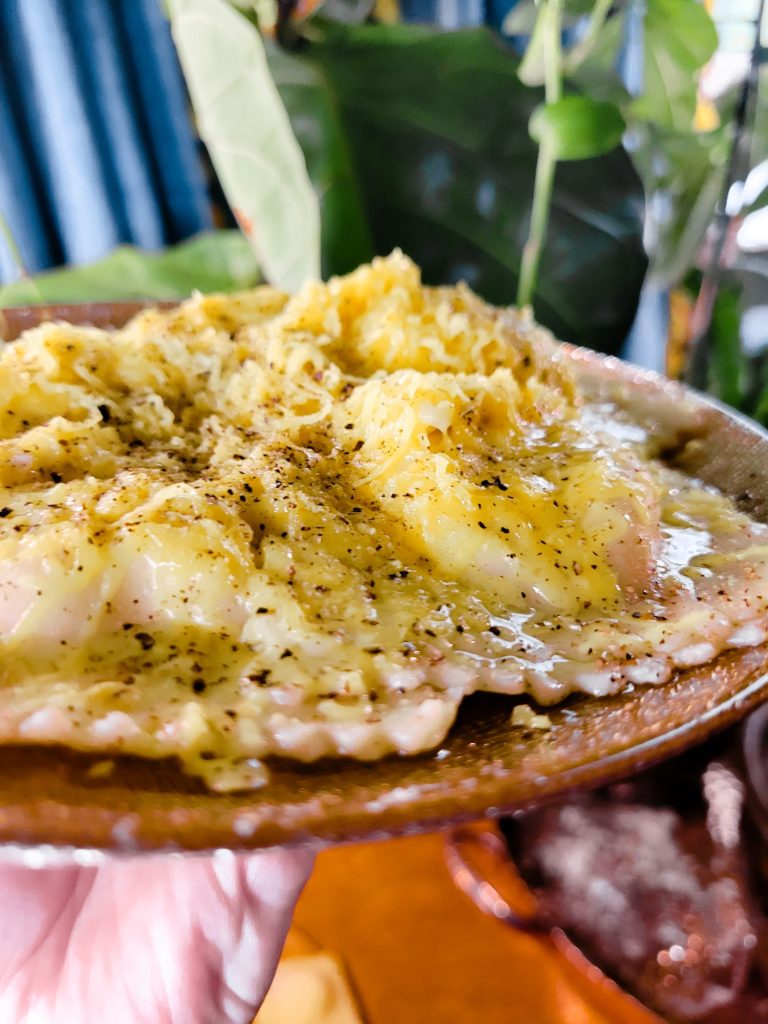
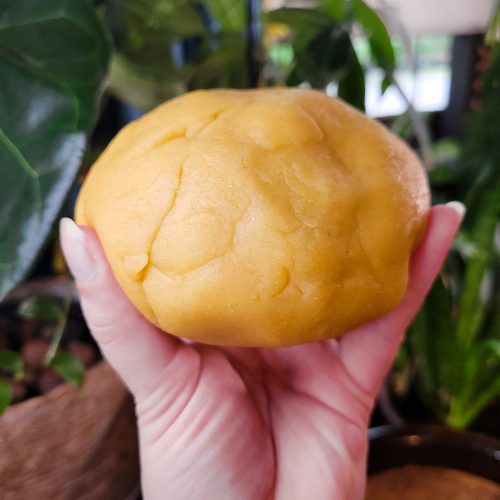
The Fundamentals of Semolina Pasta Dough
Equipment
- Large Bowl (optional)
- Rolling Pin (optional)
- Pasta Machine (optional)
Ingredients
- 3/4 c. semolina
- 3/4 c. all-purpose flour
- 3 eggs
- 1 tbsp. olive oil (optional)
- 1 tsp. salt (optional)
- 1-3 tbsp. water (optional)
Instructions
Prepare Dough
- On a large flat countertop, make a mound of semolina and all-purpose flour. Create a crater in the middle. Add eggs, olive oil, and salt.Ordinarily I would recommend doing this part on a large countertop, table, or other flat surface. If you're low on counter space, though, a large bowl is an easy fix! A bowl will also help keep the eggy mess contained if you're worried about it spilling over.
- Mix together by hand, kneading dough toward the center, for 2 minutes, or until the dough begins to stick together.
- Knead for 15 minutes, or until the dough is soft and elastic. If the dough begins to dry out, add small amounts of water, 1/2 teaspoon at a time, and continue to knead.The dough should come together completely and spring back when you press on it. Alternatively, you can use a mixer with a dough hook attachment and mix like you would for bread or pizza dough.
- Cover with plastic wrap and let rest for 1 hour.Letting the dough rest will give the gluten time to relax and will create a smoother pasta in the end. If you're short on time, you can skip this step. Although the pasta can be a little bit rubbery.
Roll Out Dough
- Add a little bit of flour to a countertop or large flat surface and roll out dough until about 1/4-inch thick. The dough should be 3-4 inches wide, so either keep in one piece that wide or cut into 3-4 inch strips.You want the dough to be thin enough to go through the pasta machine without ripping, but you don't need to make it the final product thin. That's what the pasta maker is for. If you don't have a pasta machine, follow all of these steps, but roll out as thin as you can and as close to pasta thinness as you can get.If you're low on counter space or have tile countertops, a large cutting board will work. If you don't have a rolling pin, a wine bottle, olive oil container, or even large, round jar will do in a pinch.
- Press each strip through the pasta machine at the highest setting twice. On my pasta machine, this is setting number 7.
- Fold the dough over onto itself and press a couple of times more through the highest setting.This will laminate the dough. It's not necessary to make pasta. You can skip it if you're in a time crunch. Although it will make for a smoother dough in the end.
- Press each strip through the pasta machine at a medium setting. On my pasta machine, this is setting number 5.
- Press each strip through the pasta machine at a small setting. On my pasta machine, this is setting number 2 or 3.
Shape Dough
- What you do for this step will depend on what kind of pasta you want to make. Typical pasta machines have angel hair and linguini attachments. If you don't have a pasta maker or want to do this by hand, you can also cut the pasta into the desired shapes.
- Angel Hair or Linguini: Cut each strip into 8-10 inch long pieces. Add the attachment that you'd like to use. Put each piece through the angel hair or linguini setting.Dust with a little bit of flour to keep the dough from sticking together. If you're planning on drying it, either lay individually over a pasta drying rack; over a bowl, empty pot, or even a chair; or take a handful and wrap into a nest.
- Ravioli: After putting the dough through one of the smaller settings, cut into equal-sized squares, circles, or triangles. There are stamps and molds that can make this a little bit easier to do. Although it can be done by hand or even with cookie cutters.
- Bowtie: After putting the dough through one of the smaller settings, cut into equal-sized squares. There are stamps and molds that can make this a little bit easier to do. Although it can be done by hand or even with cookie cutters. With a little bit of water, wet a strip down the middle of the dough and then pinch along that line.
Dry Pasta
- The pasta can either be cooked right away at this point or you can dry it. I like the taste of fresh pasta and usually boil it right away.Although, if you have too much, the dough is too sticky, or it's not keeping its shape you can dry it. Drying it's also helpful when making ravioli or other stuffed pastas in order to keep the fillings from spilling out during the cooking process.
- Let dry for 15-30 minutes. If you're cooking it right away, 15 minutes is usually suitable.If you're going to store it for later, let the pasta dry completely and then refrigerate. Pasta made without egg can be left to dry without refrigerating. Although pasta made with eggs should be consumed sooner rather than later.
Cook Pasta
- Bring a large pot of water to a boil.
- Put pasta into the pot and return to a boil. Cook for 1-2 minutes, or until the pasta begins to foam. Yes, I do mean ONE TO TWO MINUTES. DO NOT OVER COOK.
- Remove from heat and strain. Serve immediately.I often like to reserve some of the pasta water for sauce, although this is entirely personal preference!
Tips, Tricks, & Notes
- I like to use a half and half mixture of semolina and all-purpose flour. I find this to be the most flavorful and worth the effort. You can use entirely semolina, but it's a little bit denser than most pastas and just a little bit pricey. Half and half is a good starter recipe if you're just learning to make pasta and tends to be more palatable for those who are used to store bought pasta. You can also substitute 00 flour instead of all-purpose for a lighter consistency.
- Semolina can usually be found in the flour, specialty food, or even the "ethnic" isle of the grocery store. Italian and even sometimes Asian grocery stores will usually have it. If it's not available locally, you can always find it online.
- Pasta is best served immediately. If you want to make something ahead of time, the dough will keep for 1-2 days in plastic wrap in the refrigerator. Cooked homemade pasta does not reheat well and I do not recommend it. However, casseroles will keep for 3-4 days in an airtight container in the refrigerator. Just preheat the oven to 350 degrees Fahrenheit and reheat in a baking dish for 15 minutes, or until hot.
- It isn’t necessary to use a pasta machine. You can roll out the dough by hand. Just make sure to heavily flour the surface and roll the dough as thin as you can without it breaking apart. It may help to add an additional 1 teaspoon olive oil to the dough to make it softer and more pliable.
This Page Contains Edited Images
As a general rule, I don't like to edit my images and I am firmly against alteration of images in food blogs. It's not something that we generally think about when it comes to recipes. But food styling, editing, alteration, and even faking entirely is just as rampant a problem in the recipe realm as anything else! Cooking is a very visual art and you can tell when a lot of foods are cooked based on the color. So, when this is altered and you can't use the coloration as a gauge, it makes it quite difficult to follow some recipes. I have an entire article about Food Styling and Unrealistic Expectations of Recipes.
Because of this, I try very hard not to alter any of my photos. I like to take photos with natural sunlight during the day. Ordinarily this is very true to color and I don't edit the photos at all. However, since my place is very warm with a lot of yellow lighting, sometimes my camera overcompensates and ends up with an unnatural blue tone. In the following images on this page, I adjusted the levels and hue to try and make this more true to color. In the interest of transparency, these are the before and after photos.
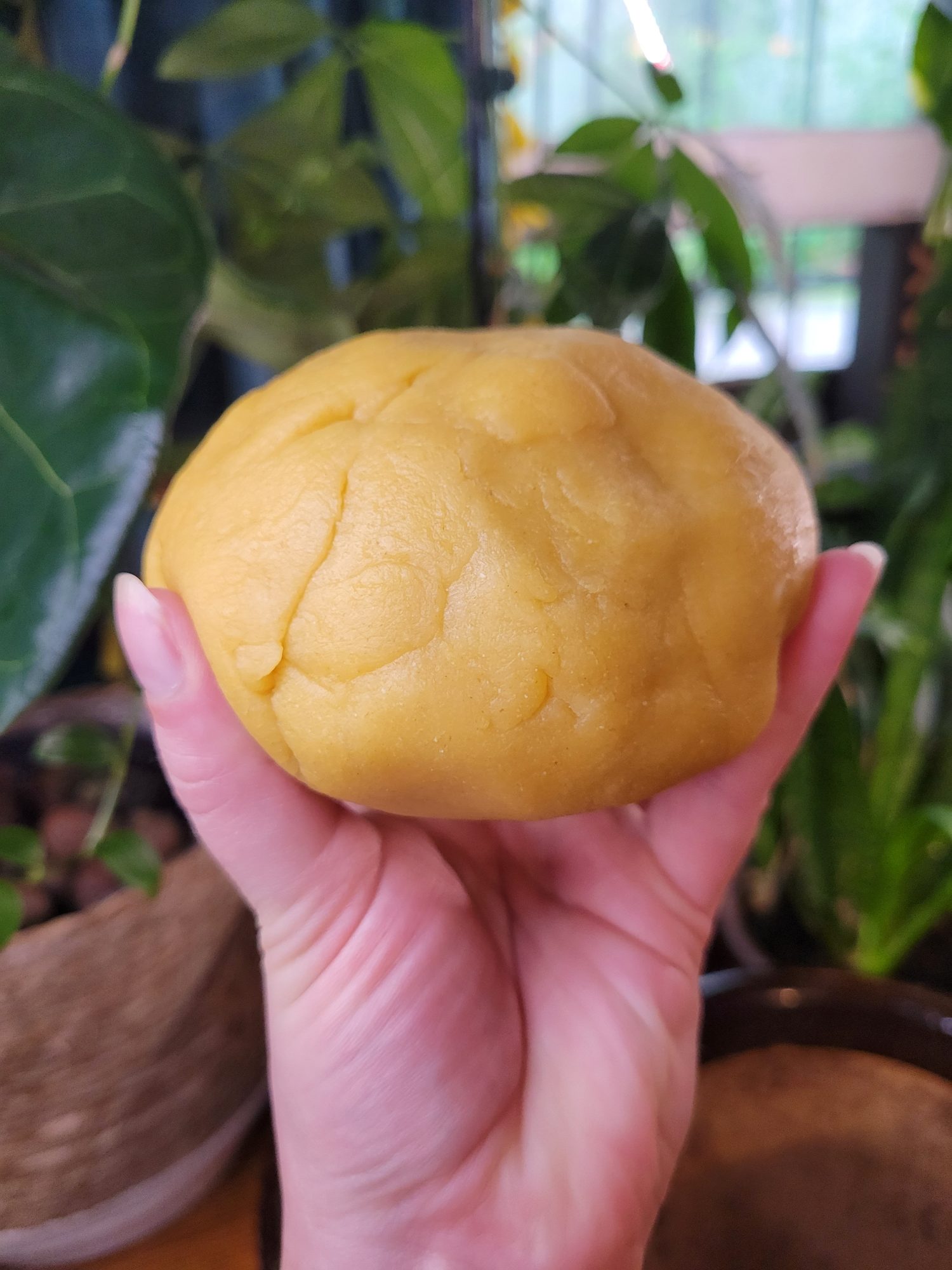

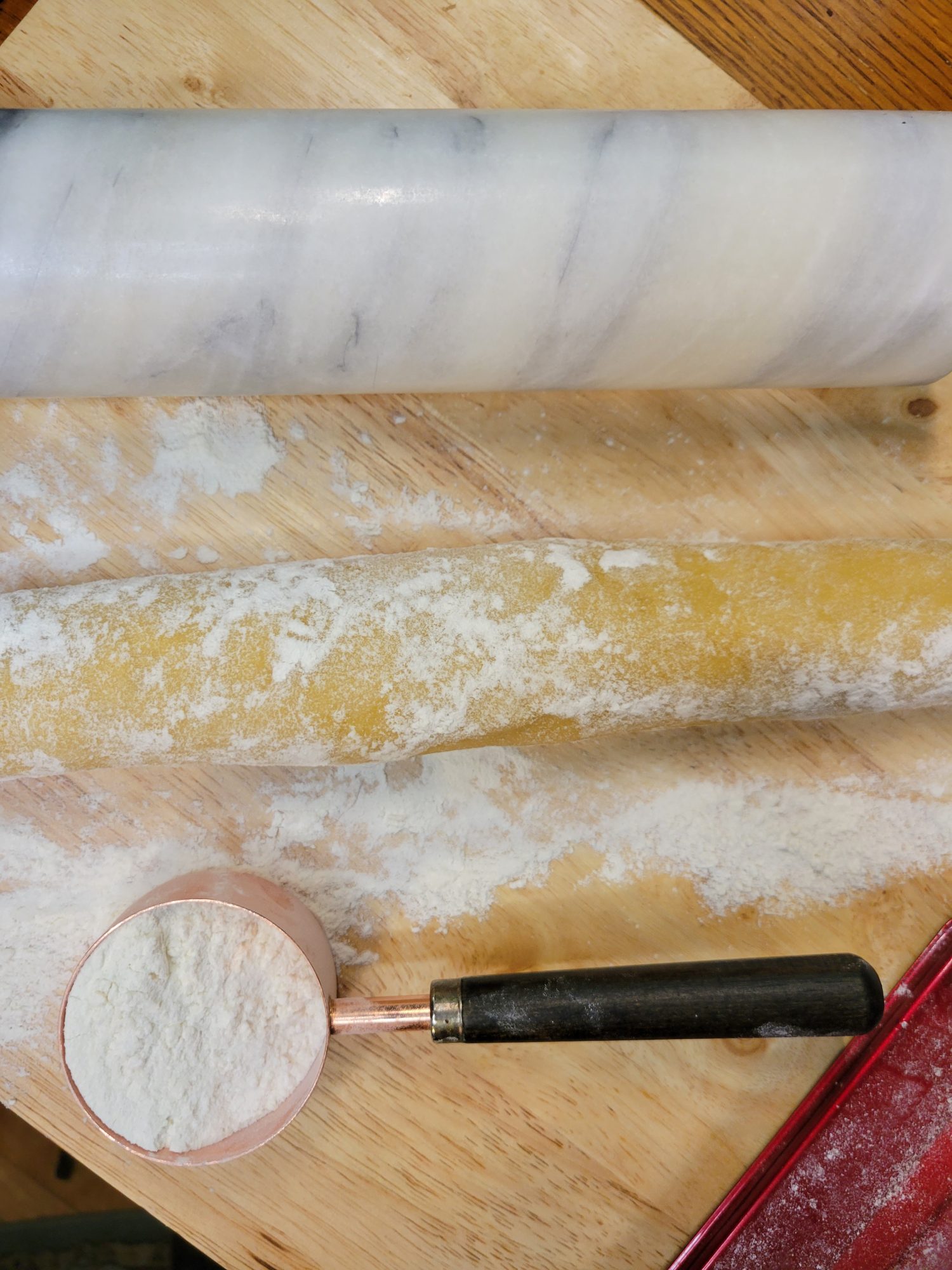

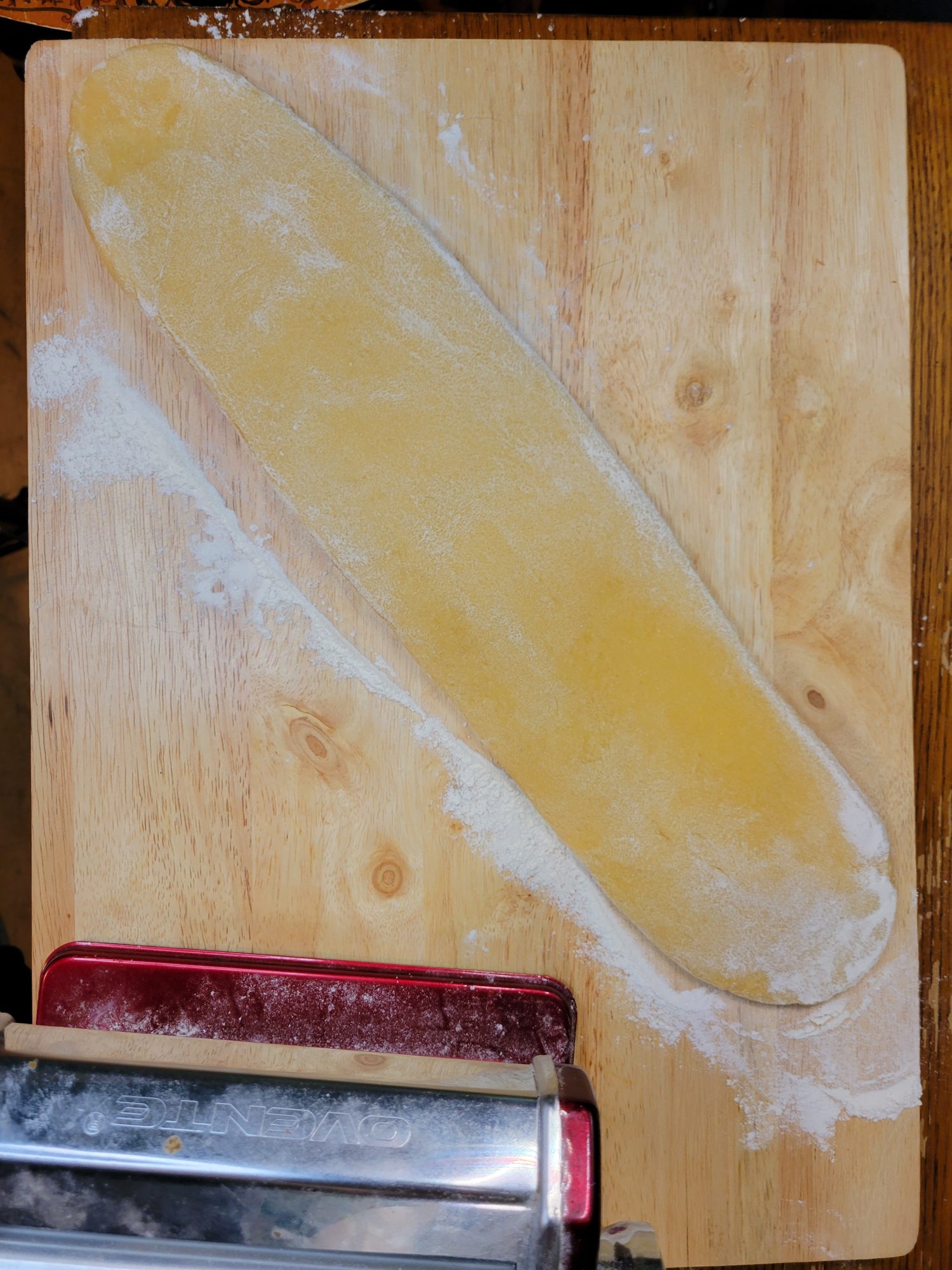

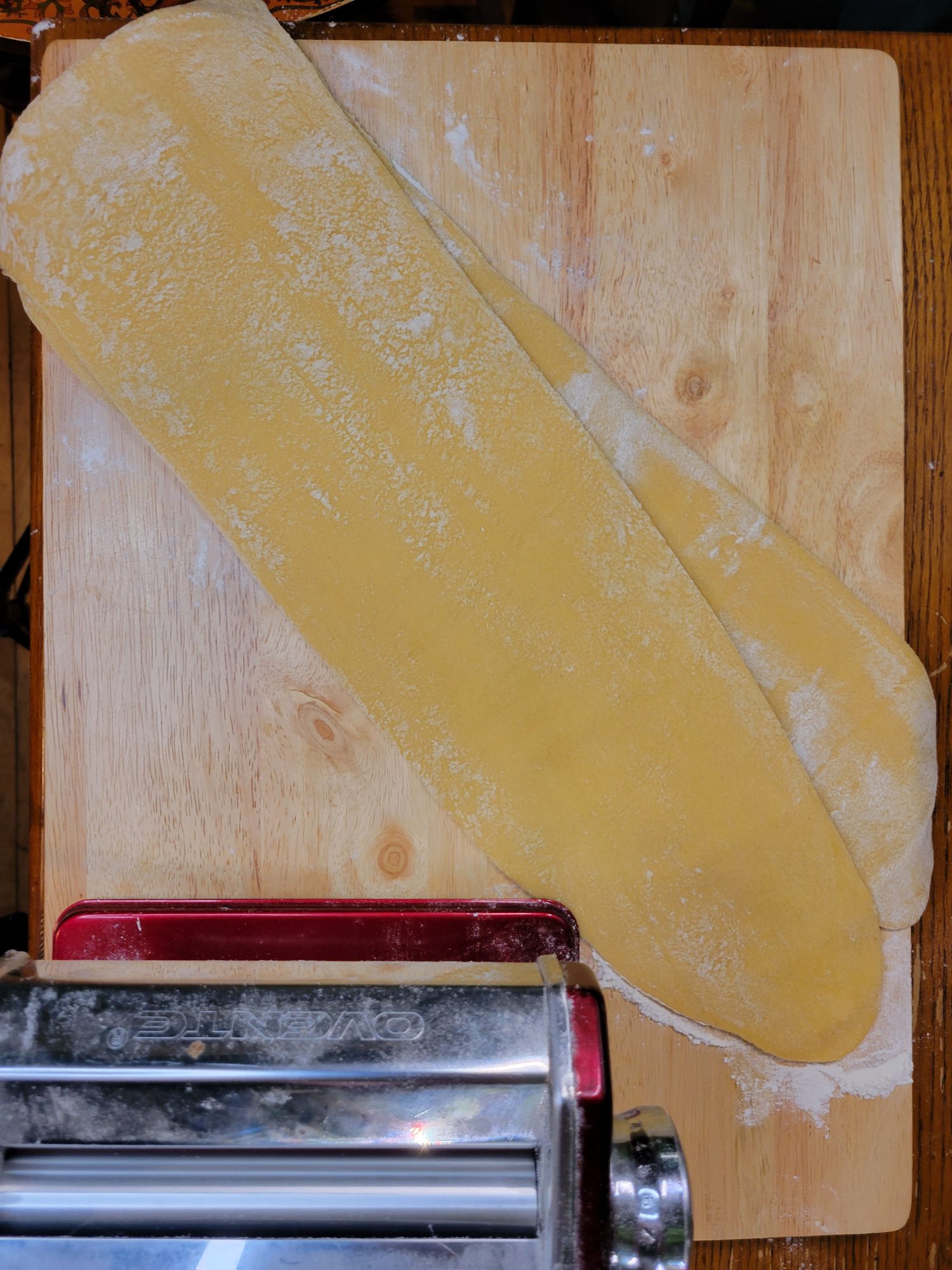

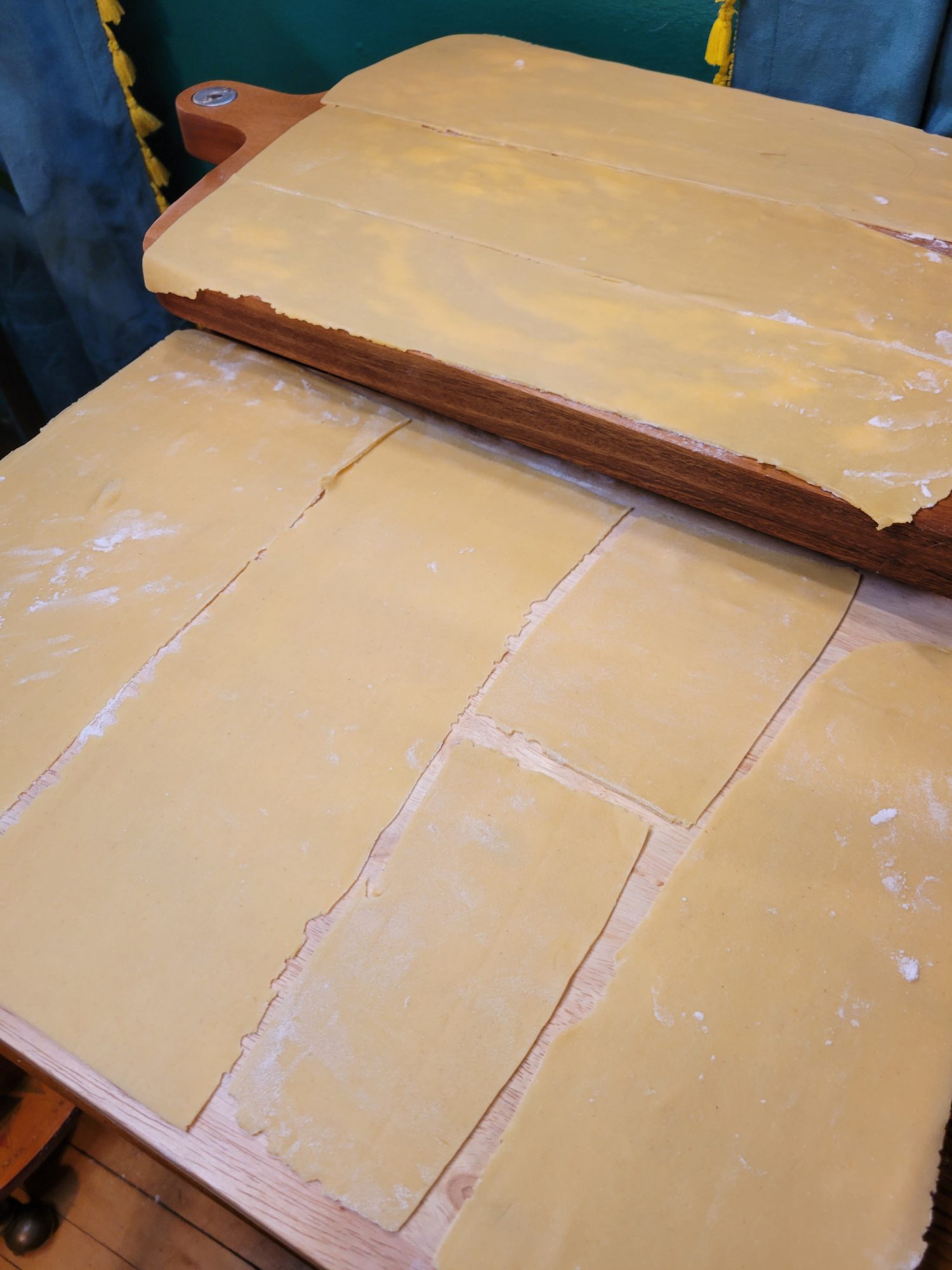

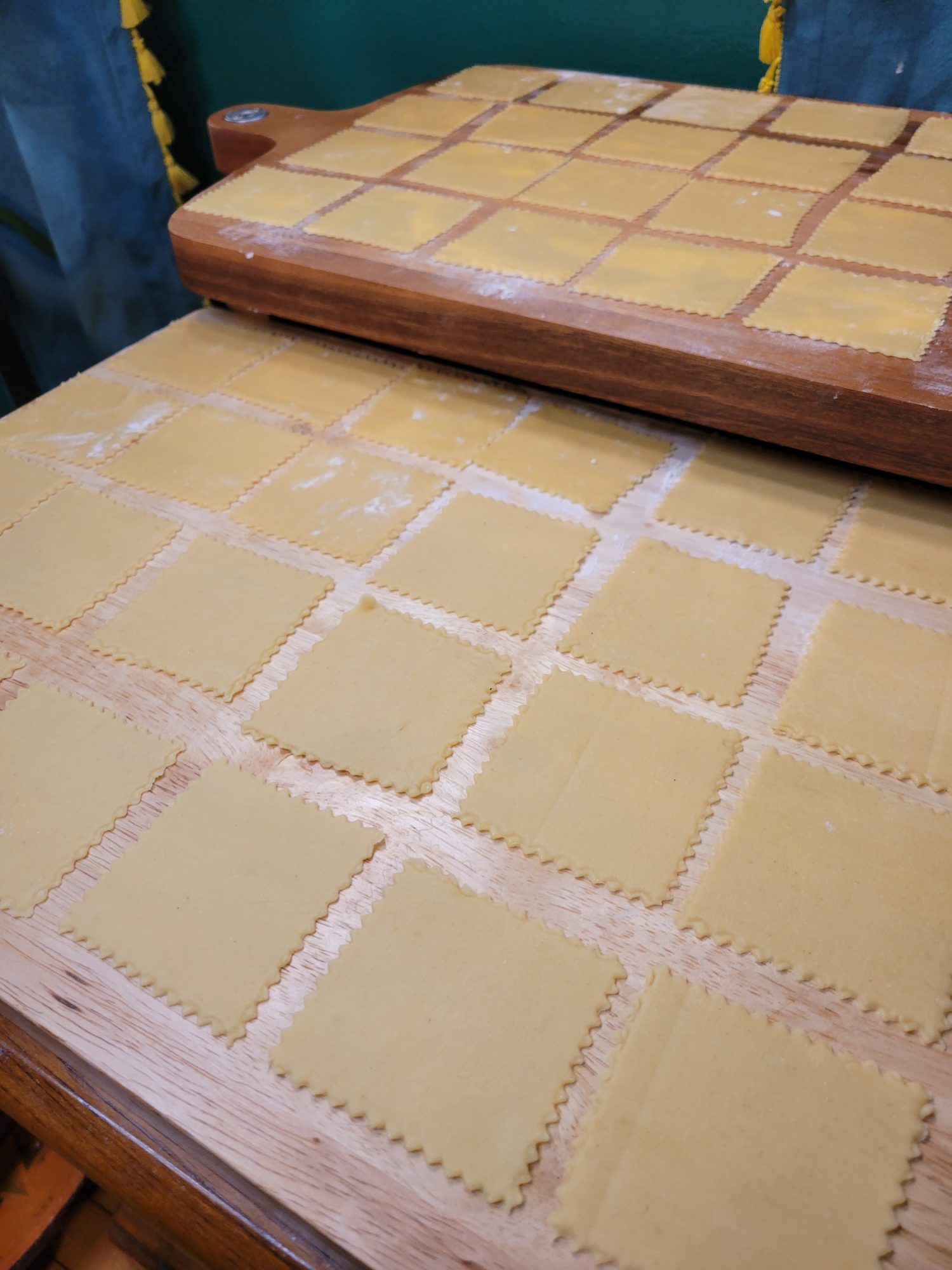

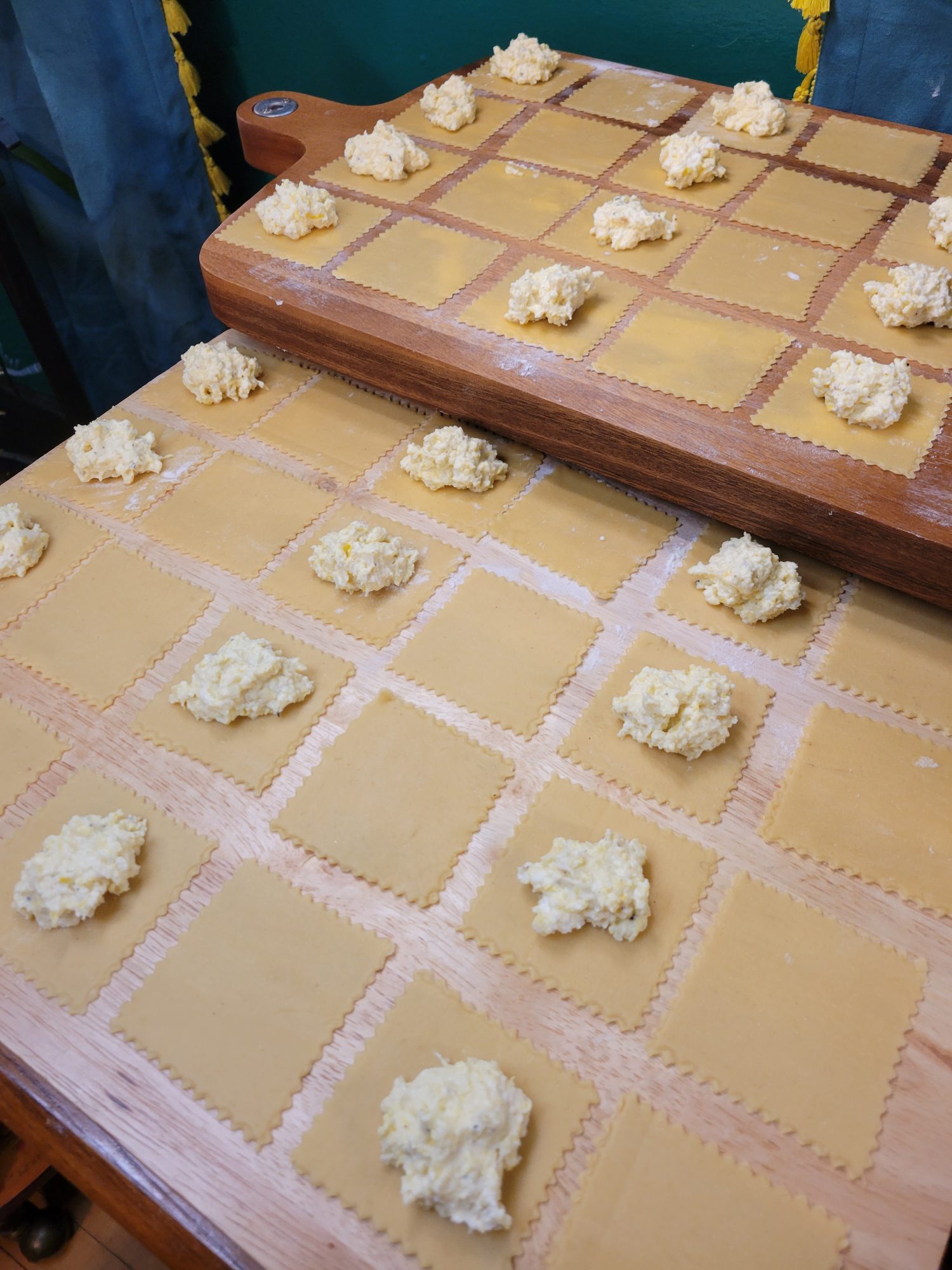

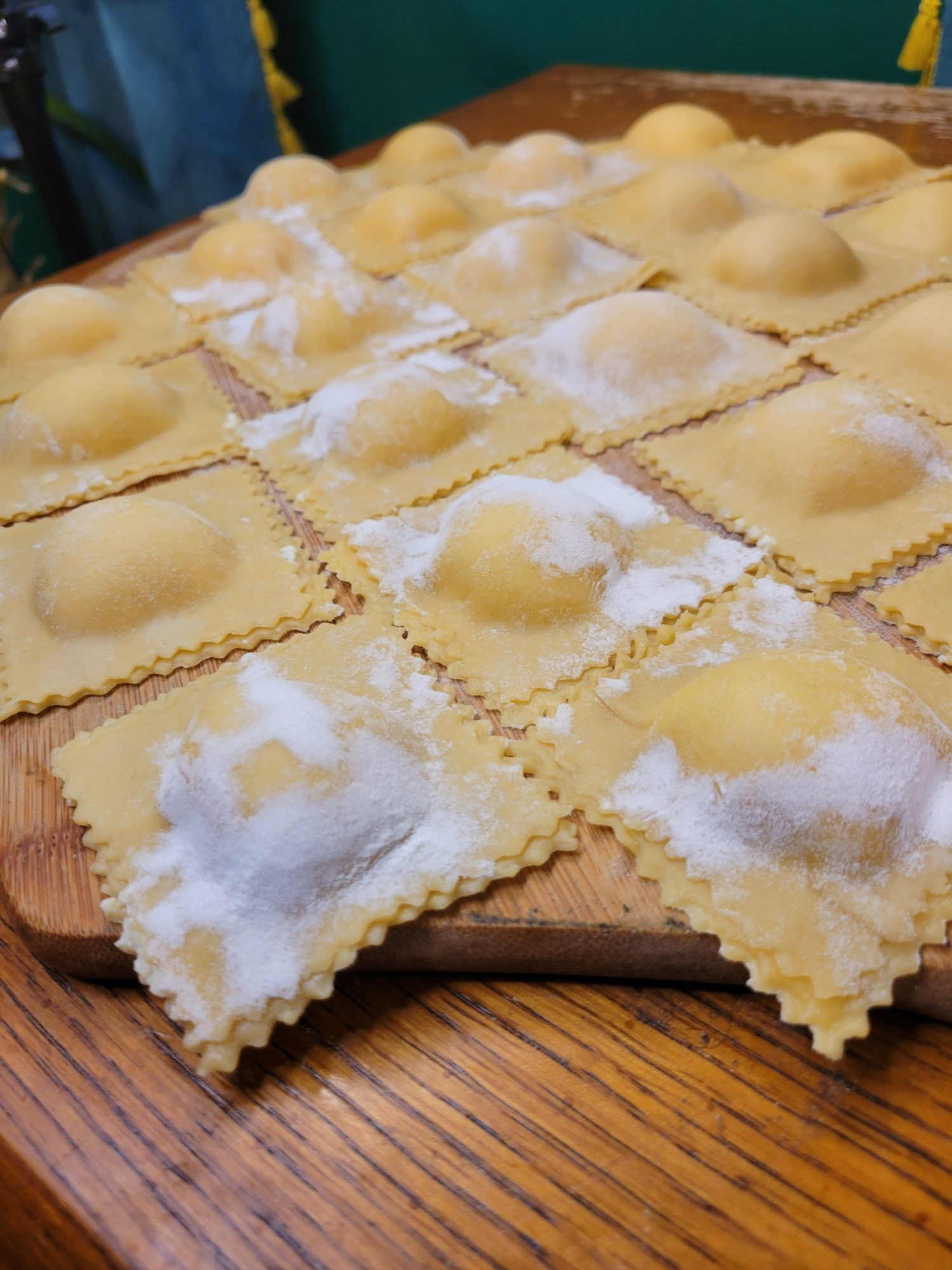

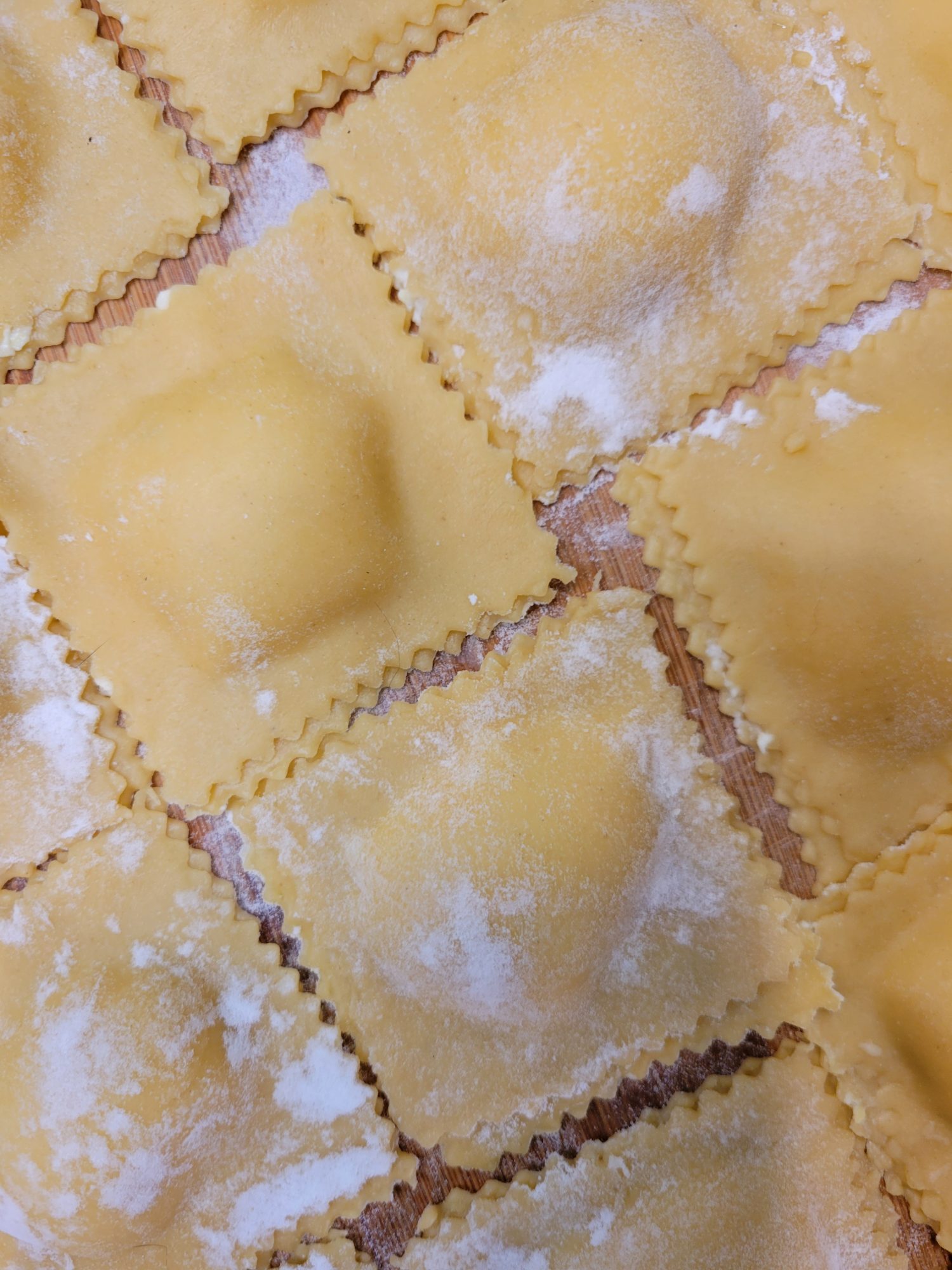

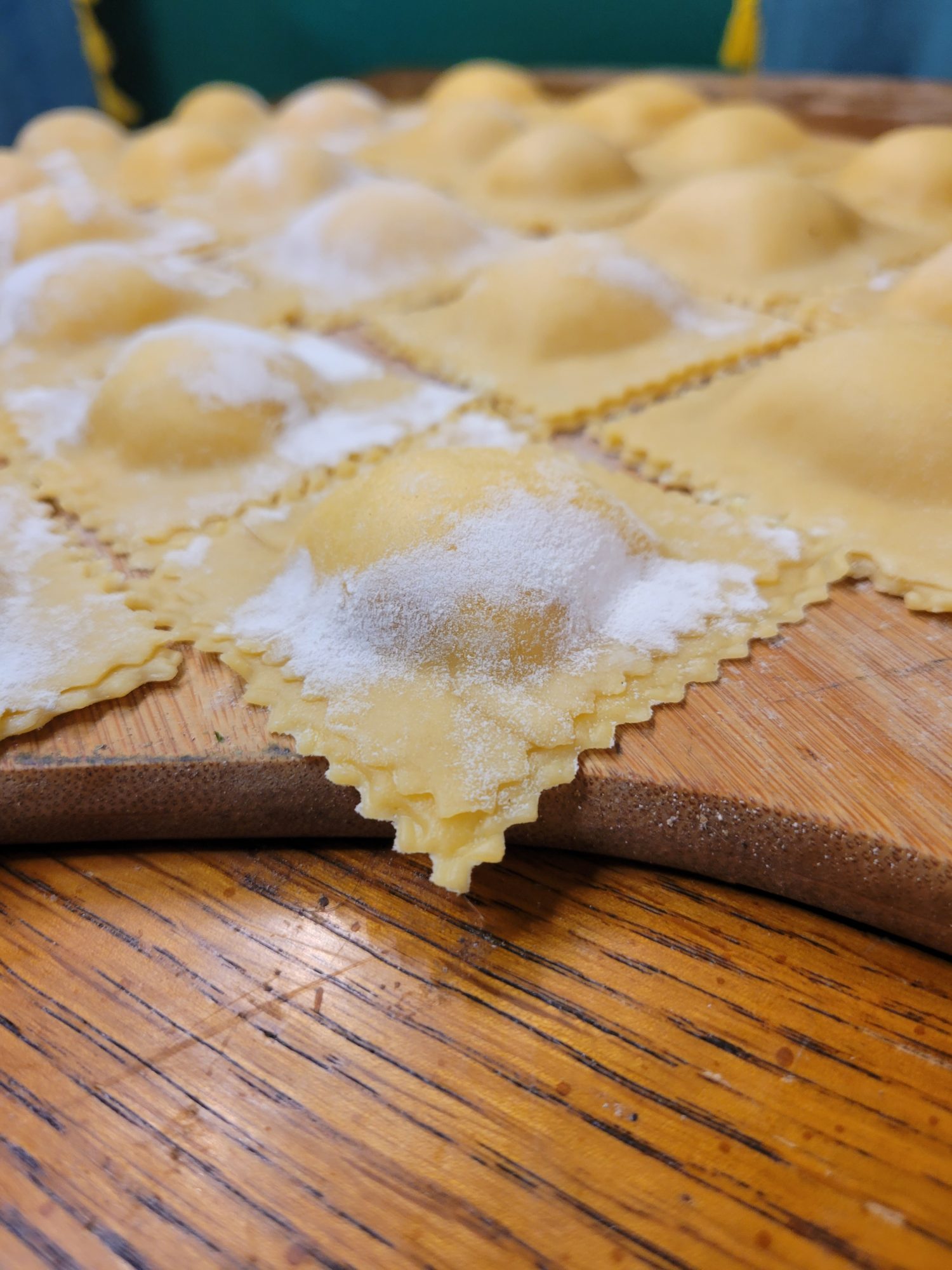

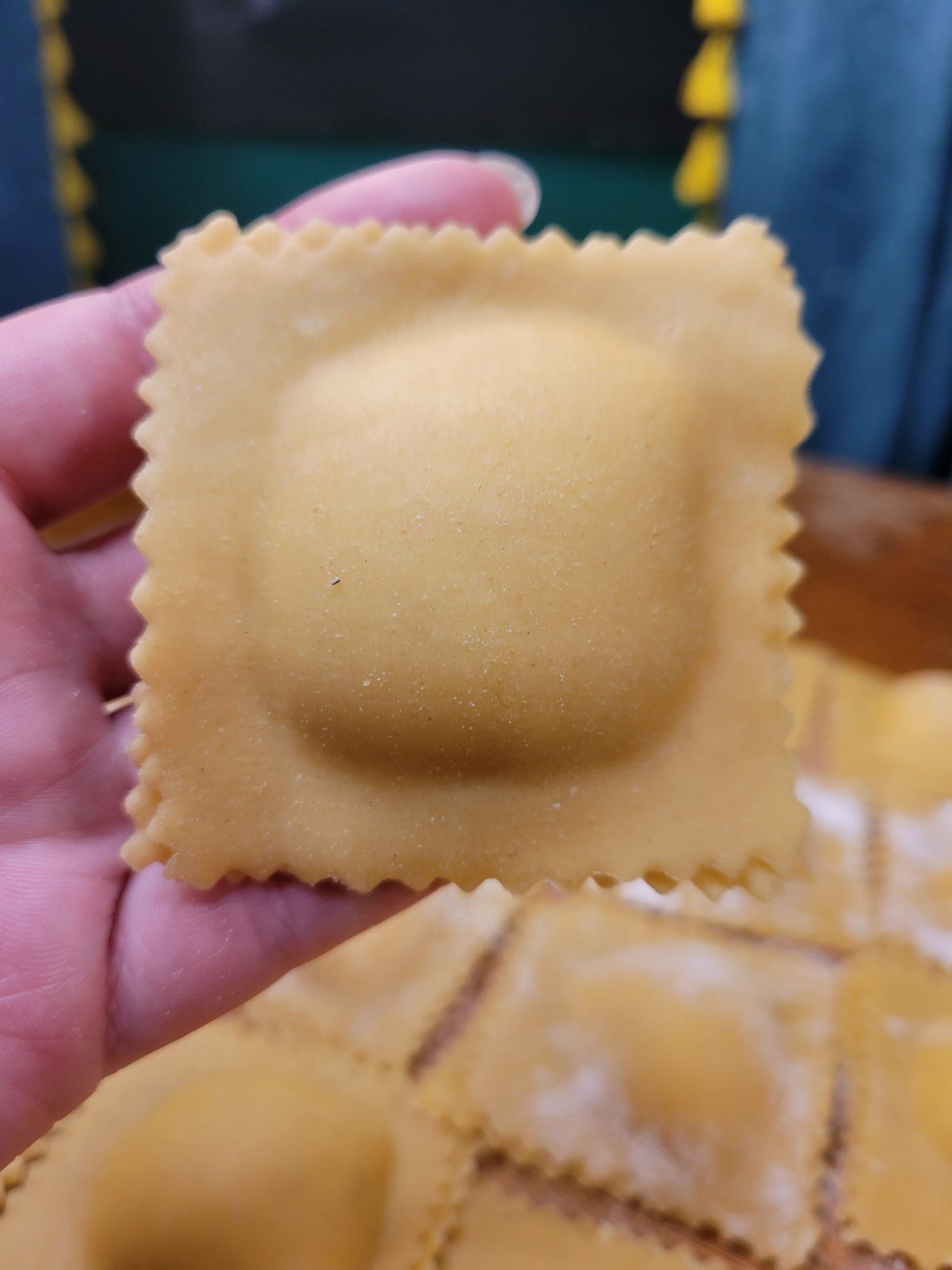

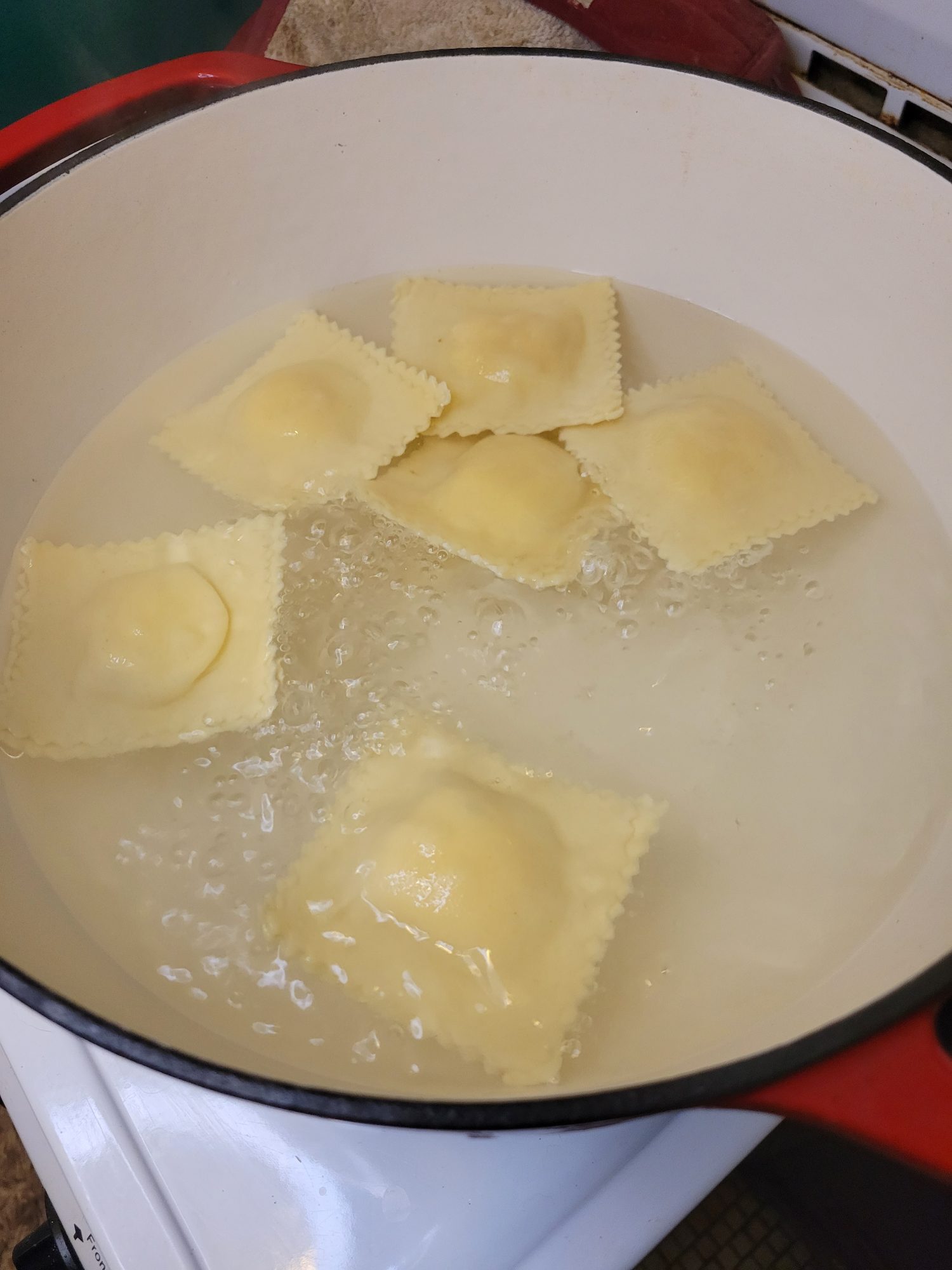

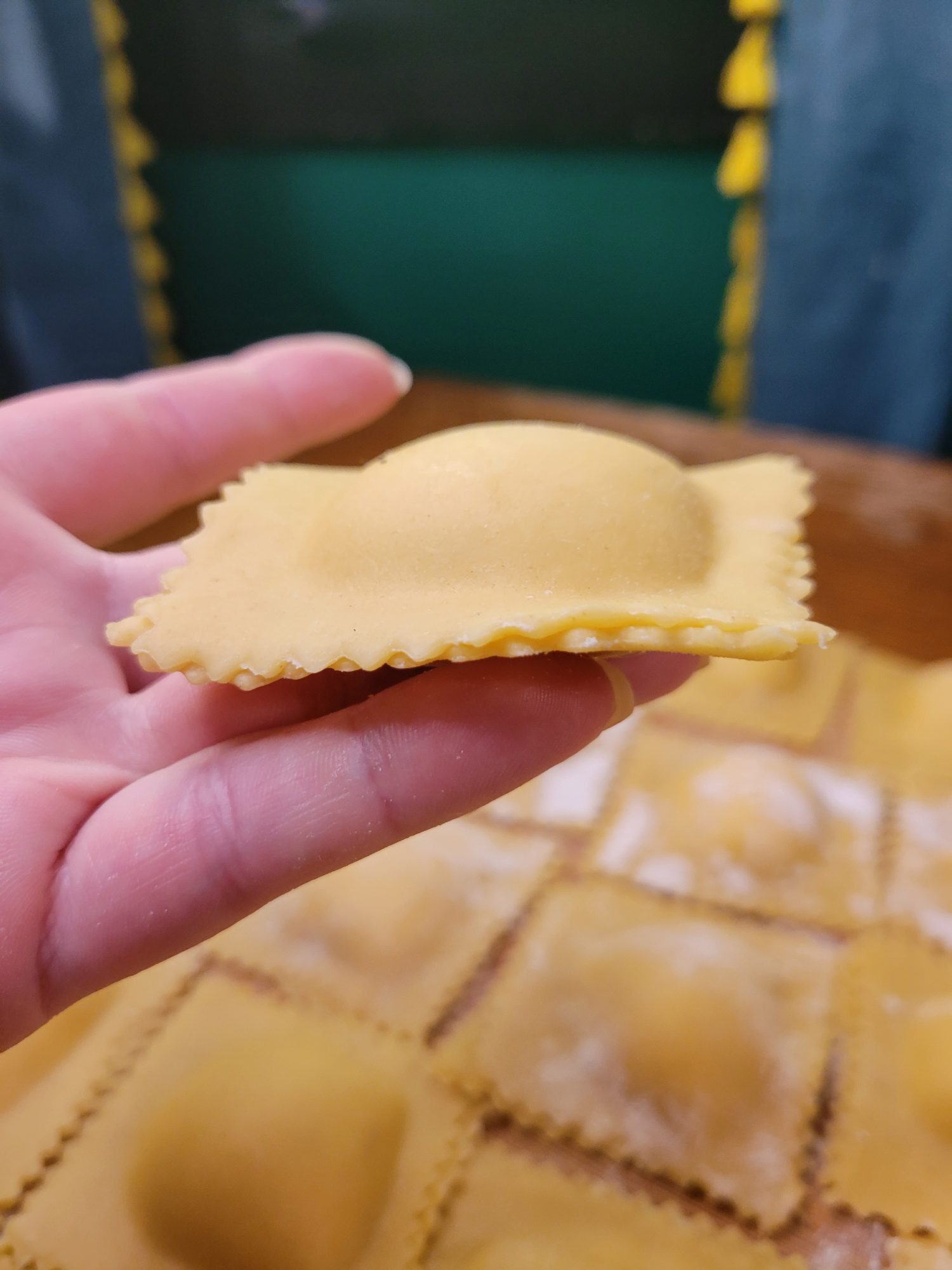

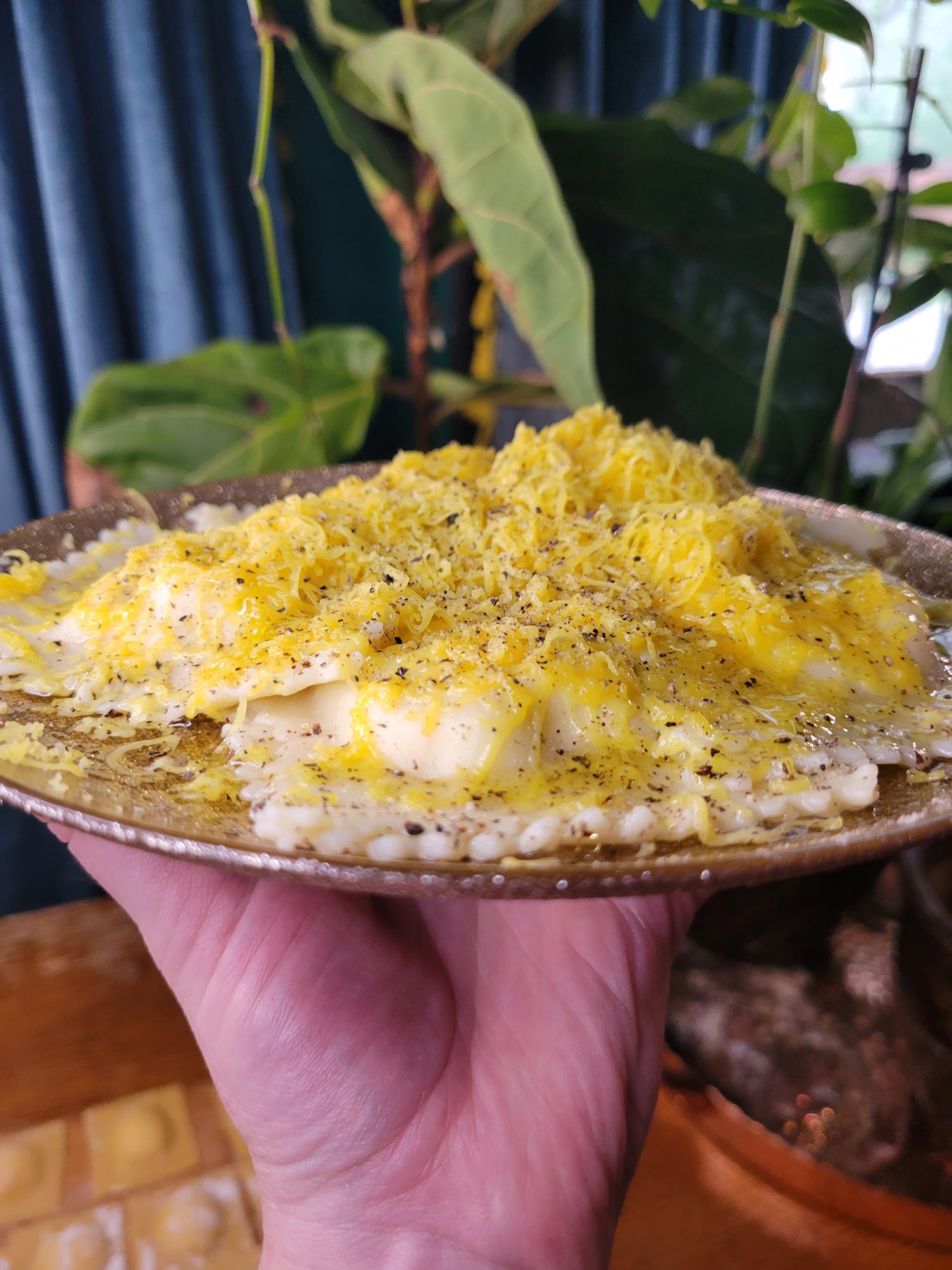

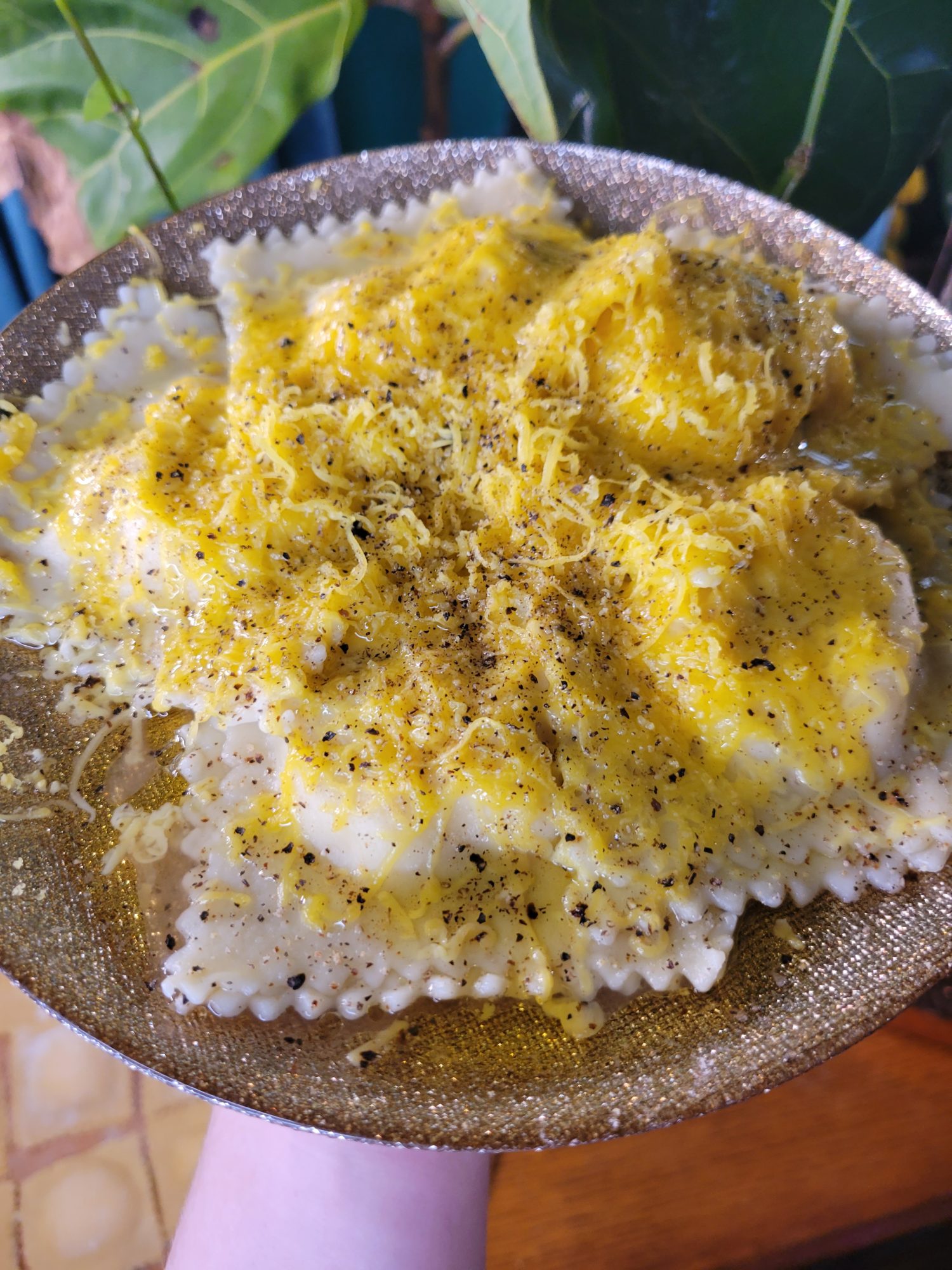

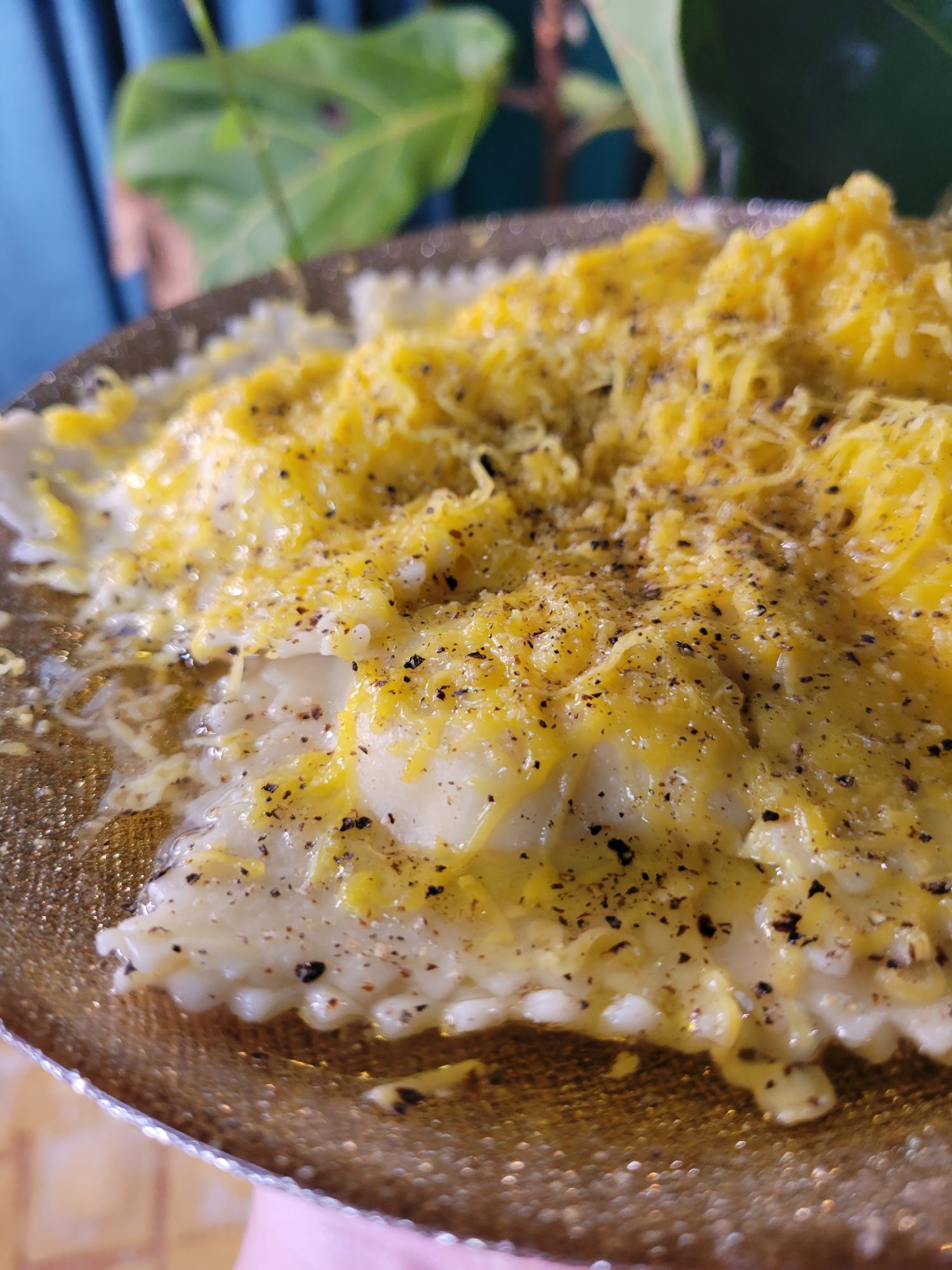

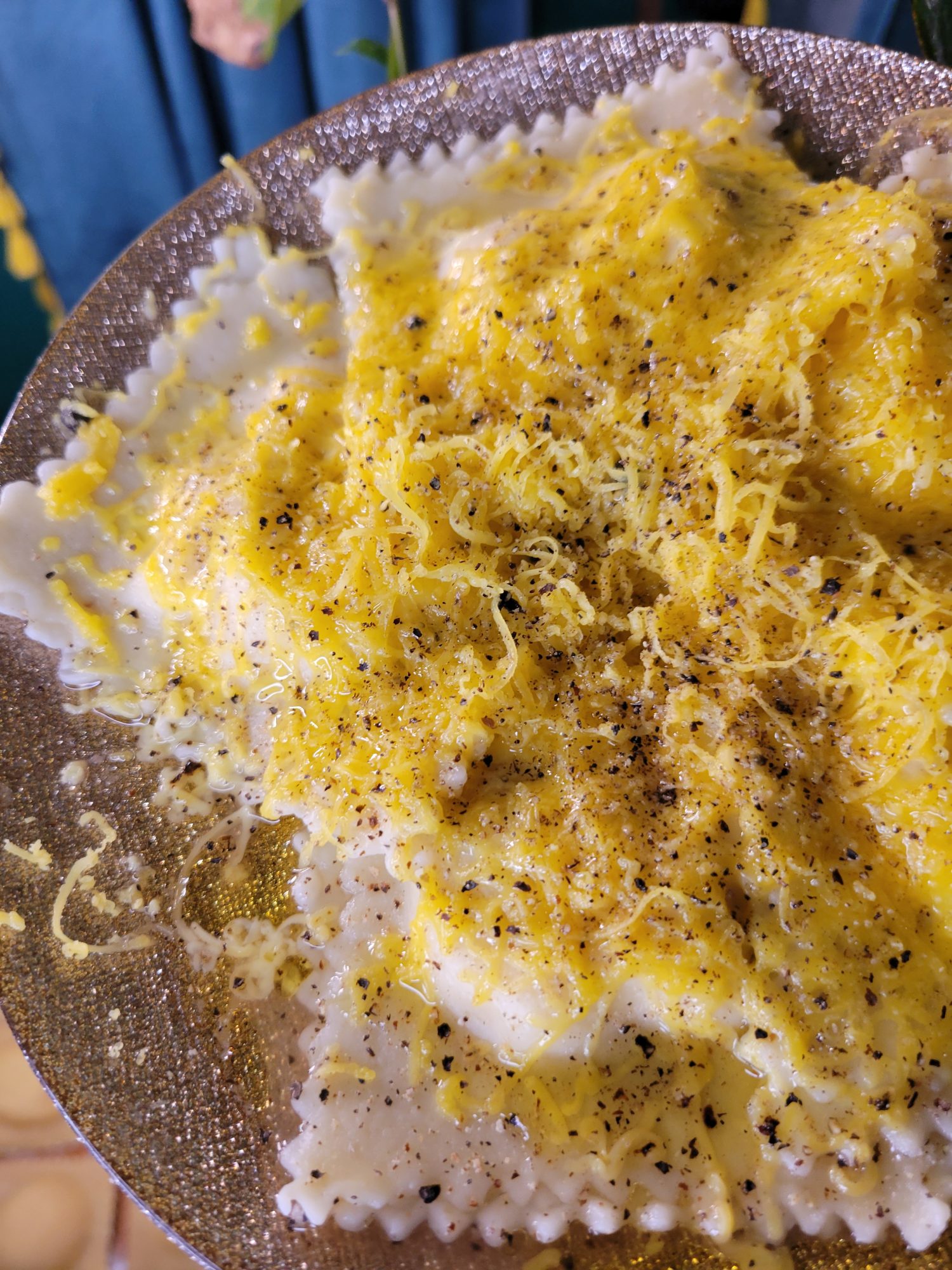

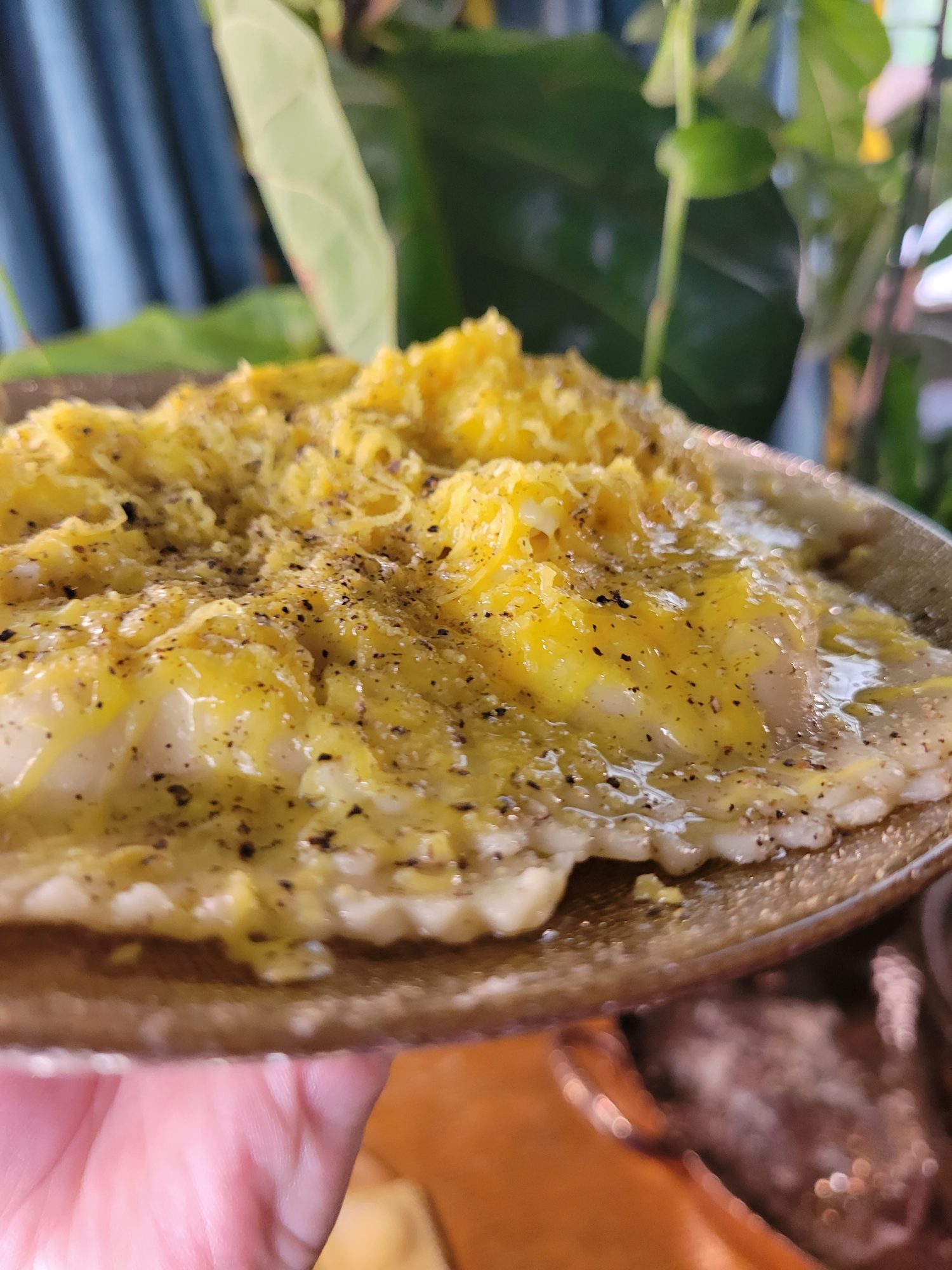


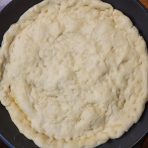
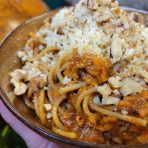


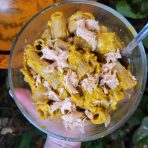

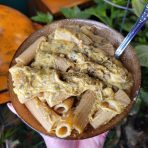
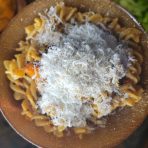
Adam
September 1, 2023 at 5:04 pmHello!
Thanks so much for a great article on pasta! I’ve had a recipe that I’ve made over the years but am now learning for a new one due to a new egg allergy. I was wondering, if you were going to use a recipe for pasta dough for regular pasta or ravioli, how would you change your recipe?
Catfish Out of Water
September 26, 2023 at 10:49 amI’m sorry to hear about your egg allergy! It can be tough to replace eggs sometimes. The nice thing about pasta is that you really only need semolina and water to make dough. Eggs can help as a binding agent, but you can omit them and still make pasta. I’ve done this before and it’s a little bit tougher to get the ratios right. But you absolutely can just keep adding flour and water until you get the right consistency! Especially with a little bit of olive oil. If you’re looking for something to replace the flavor and texture, though, aquafaba (chickpea water), yogurt, and even butternut squash can help.
Adam
September 27, 2023 at 8:00 pmThank you so much for the suggestions! I’ll have to try some of those out. Would you say to simply replace the volume of 3 eggs with the volume of the replacement? Or for something like aquafaba, would you replace the entirety of the water with that and omit the eggs? Thanks again!